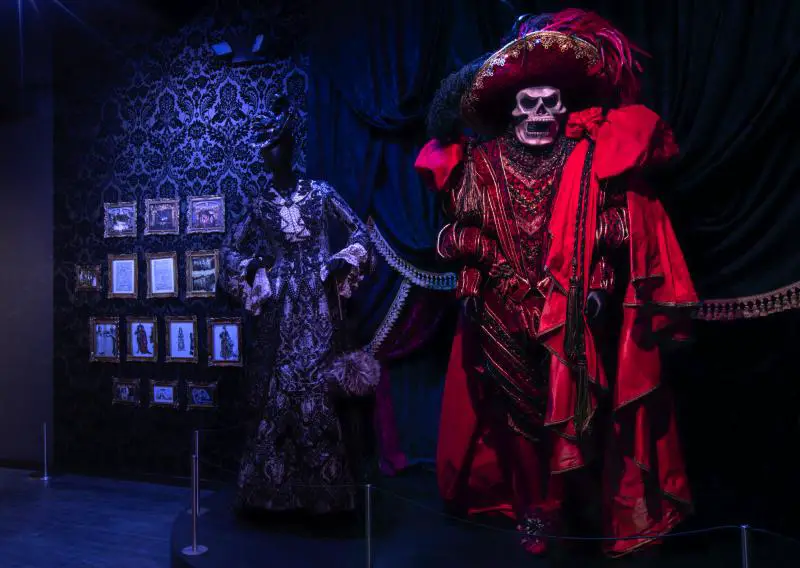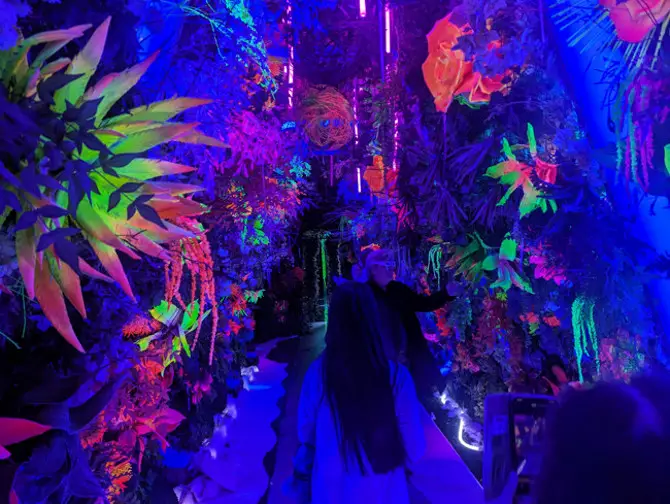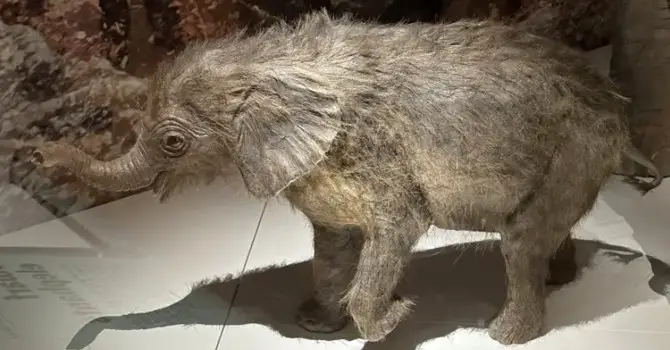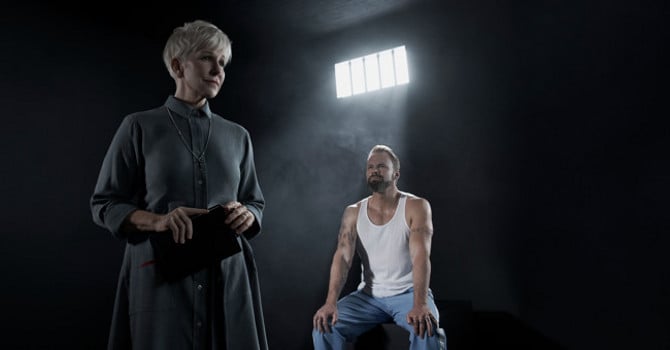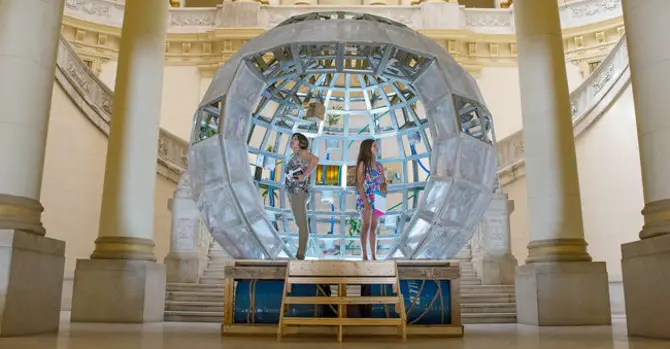NYC museums have something for everyone, whether your interest is art, history, or New York City itself. From niche spaces dedicated to very specific interests (Himalayan art, the moving image) all the way up to world famous institutions like the Metropolitan Museum of Art and the Guggenheim, museums in NYC show off their cultural bona fides seven days a week.
The Metropolitan Museum of Art
Photo by Robert Bye on Unsplash.
With more than two million works of art covering more than 5,000 years of history from across the world, the Met is a must-see for anyone visiting New York. You can’t catch everything in a day—or even a week, possibly not a month—so don’t try. Rather, whether you’re a planner or a wanderer, aim for a mix of the two.
Start on the first floor with a trip to the Egyptian galleries, one of the museum’s most popular stops. Be sure to visit the Temple of Dendur, housed in its own gallery. Check out the Arms and Armor collection, also on the first floor. The American Wing courtyard beckons right outside, so admire the sculpture and the Tiffany works of art.
From there, the massive second floor awaits. A stop in European Paintings is a must—many visitors, in fact, head right to the Impressionist galleries. The Asian galleries are vast and incredible, so either choose a section or let your feet wander where they may.
Finish off your visit with a trip to the Greek and Roman galleries back on the first floor; check out the smaller side galleries. And plan for a return visit!
1000 Fifth Ave., 212-535-7710, metmuseum.org
On View Now at The Metropolitan Museum of Art: Women Dressing Women
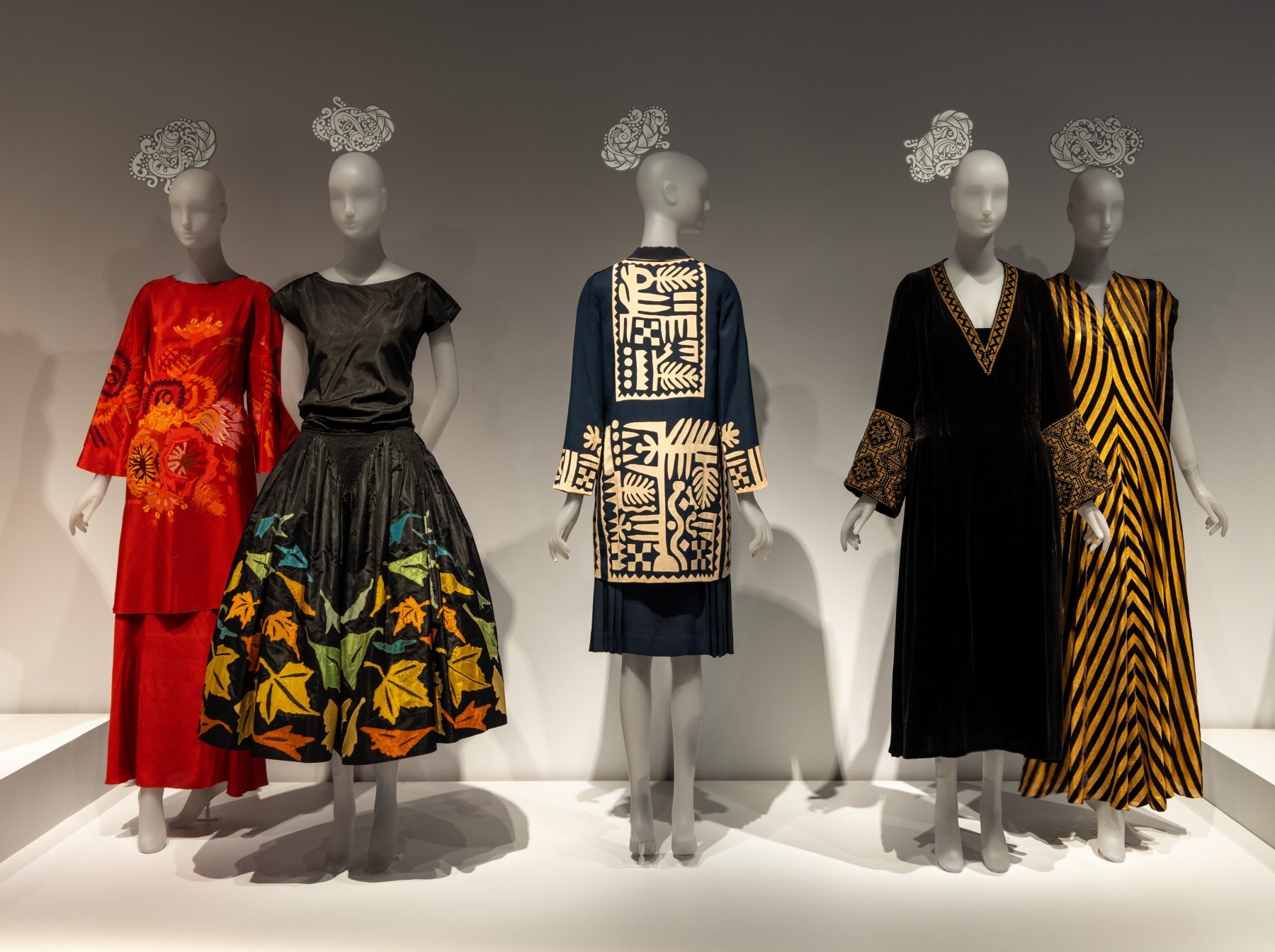
GalleryView, Agency: Liminal Spaces of Fashion. © The Metropolitan Museum of Art.
One of the most popular spots to visit at the Metropolitan Museum of Art is its fashion arm: The Costume Institute. The new exhibition here is Women Dressing Women, which explores the creativity and artistic legacy of women fashion designers from The Met’s permanent collection. Explore the work of 70 womenswear designers spanning more than a century and running from French haute couture to American makers to the latest in contemporary design. Through March 3rd.
The Met Cloisters
Annunciation Triptych (Merode Altarpiece). Workshop of Robert Campin (Netherlandish, ca. 1375–1444 Tournai).
The uptown branch of the Met may be located in Fort Tryon Park, at the tip of Upper Manhattan, but you’ll feel like you’re miles away—and maybe have stepped back in time hundreds of years. The Cloisters, the only museum in the United States dedicated to the art of the Middle Ages, includes sections of five medieval cloisters, and showcases metalwork, sculpture, paintings, and textiles—including the famed Unicorn Tapestries.
In the warmer months, the medieval gardens yield a fascinating glimpse into how plants were used in the Middle Ages; they’ve been a part of the museum since 1938. Don’t miss the plants in the herb garden, in particular, which are grouped by use—from medicine to magic.
The Met Cloisters, 99 Margaret Corbin Drive, Fort Tryon Park, metmuseum.org
The American Museum of Natural History
Photo: D. Finnin, courtesy American Museum of Natural History.
Many people head to the AMNH for the dinosaur exhibits in the Fossil Halls—and they’re not wrong; they’re extraordinary, and those galleries are the home of many a family on weekends. But the museum also offers several other not-to-be missed exhibits, from the Hayden Planetarium in the Rose Center for Earth and Space to the new Earth and Planetary Sciences Halls, which feature rare gems minerals and meteorite, including one that weighs 34 tons. The revitalized Northwest Coast Hall highlights new exhibits developed in concert with Indigenous communities and includes 1,000 objects from 10 Native Nations of the Pacific Northwest. The brand-new Richard Gilder Center for Science Education and Innovation includes galleries, classrooms, and an immersive experience (see below).
200 Central Park West, amnh.org
American Museum of Natural History: Richard Gilder Center for Science, Education, and Innovation
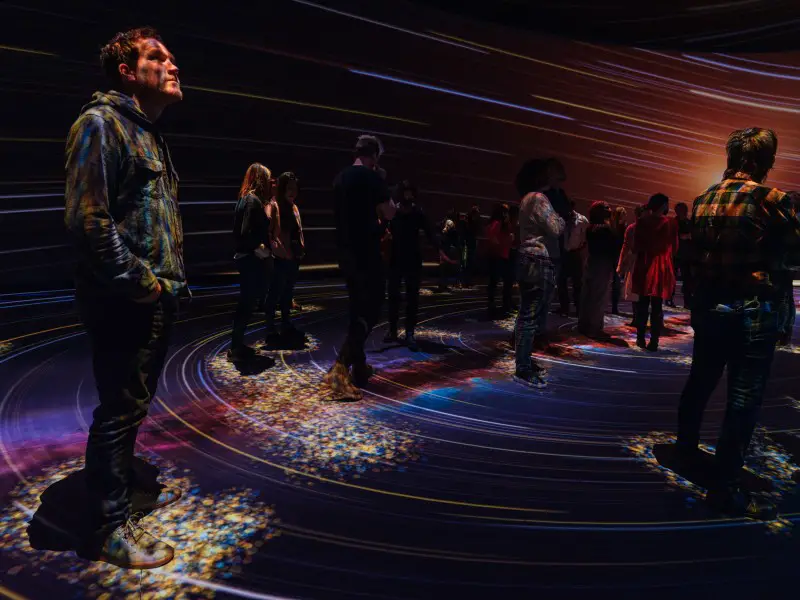
Invisible Worlds Immersive Experience in the new Richard Gilder Center for Science, Education, and Innovation. Alvaro Keding/© AMNH.
It’s got beetles and butterflies, bats’ wings and human brains: it’s the new Richard Gilder Center for Science, Education, and Innovation at the American Museum of Natural History.
he new center offers a multitude of extraordinary experiences, all adding up to one incredible, immersive experience.
Immersive is the name of the game in the amazing Invisible Worlds immersive experience. In the Susan S. and Kenneth Wallach Gallery, visitors are introduced to the ties that connect life on this planet, from how organisms interact in ecosystems to why your hands resemble a bat’s wing. From there, enter a world that lets you become part of a Brazilian rainforest, follow migrating jellyfish, and even explore the human brain in a completely immersive experience. You’re surrounded by images that make you feel like you’re part of what you’re observing; at certain moments, in fact, your movements influence the projections around you.
Creepy crawly critters take center stage in the Susan and Peter J. Solomon Family Insectarium, in which you’ll find 18 live species of insects and can interact with digital exhibits to learn about the critical role that insects play in earth’s ecosystems. Get up close with stick insects, crickets, katydids, and grasshoppers—as well as one of the world’s largest displays of live leafcutter ants—and don’t miss the transparent skybridge and fungus garden.
And more than 1,000 butterflies—representing 80+ different species—are flying, feeding, and yes, even landing on you in the David Family Butterfly Vivarium (a structure created to keep animals in seminatural conditions for study or observation). You can let the butterflies stay as long as you like or ask a staff member to remove your new friend if you’re ready to move on. Just be gentle. Learn about the butterfly’s life cycle—and, if you’re lucky, maybe even see a chrysalis break open and an adult butterfly emerge.
The new addition to the museum offers a breathtaking way to explore the natural world in an extraordinary space that connects to the rest of the museum and offers the most hands-on way yet to truly immerse yourself in the life that’s all around us.
On View Now at the American Museum of Natural History | Extinct and Endangered: Insects in Peril
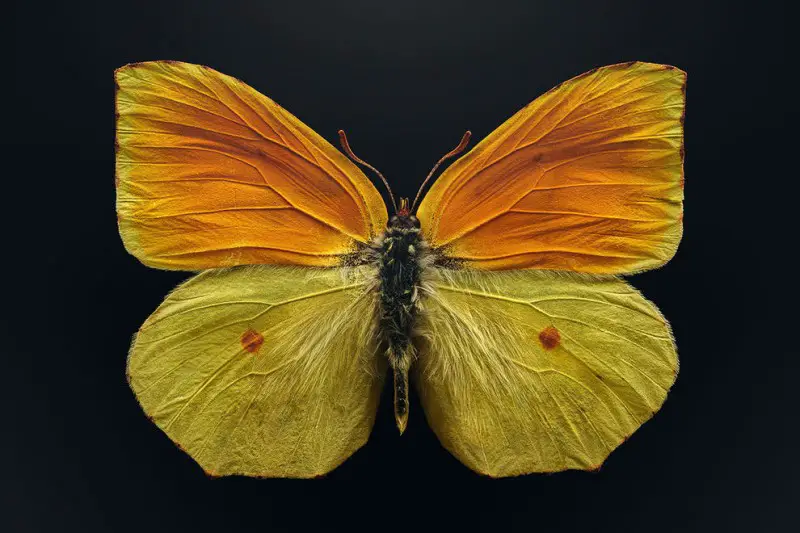
The endangered butterfly Gonepteryx maderensis, also called the Madeiran brimstone, feeds on just one type of tree as a caterpillar. © Levon Biss.
When you visit the American Museum of Natural History, you may never get out of the dinosaur exhibit, or maybe the Planetarium. And that’s understandable, but you also shouldn’t miss the special exhibitions. Case in point: Extinct and Endangered: Insects in Peril, which uses large-format photographs to demonstrate 40 important but imperiled insect species.
The specimens are taken from the museum’s own research collection; some of the photos are as large as 4.5 x 8 feet. (The museum’s collections include 34 million artifacts, of which almost 20 million are arthropods—insects, crustaceans, and arachnids from around the world.)
Photographer Levon Biss used his macrophotography to show how these insects are in decline, and how much they are needed to keep our ecosystems healthy. Every photo in the exhibit was created from up to 10,000 individual images using lenses that can capture microscopic details; each photo took up to three weeks to create. The juxtaposition between the tiny size of the insects and the enormous photographs is striking, and they are often rendered strangely beautiful. As the British photographer notes: “We shouldn’t ignore them just because they’re hard to see.”
The exhibit includes insects both familiar and, at least to us, unfamiliar (as well as having great names): the Blue Calamintha Bee; the San Joaquin Valley Flower-Loving Fly; the Nine Spotted Lady Beetle; the Hawaiian Hammerheaded Fruit Fly. Some of the specimens were so fragile that they had to be brought by museum staff to the photographer’s studio; others are so rare that government permission was required to ship them to England.
While the photos can be viewed as impressive in their own right, visitors will hopefully come away realizing the insects’ importance to the world’s ecosystem—and that though they’re small, their importance is outsized.
On View Now at the American Museum of Natural History | The Secret World of Elephants

The Dwarf elephant (infant pictured), or Palaeloxodon falconeri, is about the size of a bulldog and lived in what is now Sicily approximately 450,000 years ago. Photo by Linda Sheridan.
The Secret World of Elephants delves into the extraordinary minds, bodies, and interactions of Earth's largest land mammals. The exhibition highlights the urgent need for conservation, as only three elephant species survive. A life-size model of an African elephant showcases its skeletal structure, revealing insights into its massive dietary intake and nearly two-year gestation period. The exhibit explores how elephants "hear" with their feet, use trunk muscles, and shape ecosystems. Visitors engage with interactive stations on elephant body language, vocalizations, and can touch teeth from mammoths and mastodons. Fossil evidence dating back 60 million years is presented, emphasizing the critical role elephants play in their ecosystems. The curator underscores the threats of ivory demand, climate change, and habitat loss, emphasizing the need for swift action. The exhibition also features the Dwarf elephant, an ancient species resembling a bulldog in size. A documentary on the Reteti elephant sanctuary in Kenya adds a poignant dimension, showcasing efforts to rehabilitate orphaned elephants for release into the wild.
Museum of Modern Art
Photograph by Jonathan Muzikar, courtesy MoMA.
Boasting one of the finest collections of modern art in the world, the Museum of Modern Art offers viewers a collection with approximately 200,000 sculptures, drawings, paintings, design objects, and more. Works of art from MoMA's collection are shown in rotating exhibits, so visitors can often expect to see things they haven’t seen before. The museum’s vast holdings include Brancusi, Picasso, Matisse, Mondrian, and Monet.
And don’t forget to check out MoMa PS1, in Queens, which focuses on new artists and experimental practices, as well as community collaborations and partnerships.
11 W. 53rd St., moma.org
Guggenheim
With its famous Frank Lloyd Wright-designed inverted ziggurat-shaped building visible from blocks away, The Guggenheim has held an iconic presence in New York since 1959. (Wright was actually commissioned to build it in 1943, but various delays meant it wasn’t built until 16 years later.) And just being inside the building, no matter how many times you’ve previously experienced it, is always a thrill. The spiral ramp and unique layout are visually enthralling and unlike any other museum experience. The museum, now one of several across the world, offers exhibits that highlight both the museum’s own collection as well as objects from other museums. Check out the ongoing Thannhauser Collection, which includes works by Degas, Manet, van Gogh, and more than 30 by Picasso.
1071 Fifth Ave., 212-423-3500, guggenheim.org
The Jewish Museum
Photo by Linda Pierce.
One of the oldest Jewish museums in the world (and the first of its kind in the United States), the Jewish Museum offers exhibitions that illuminate Jewish culture for a wide audience. Its collection of nearly 30,000 works of art includes ceremonial objects, books, and media that span 4,000 years. “Scenes from the Collection” offers a rotating exhibit of selected works presented in scenes arranged by theme, using different filters to understand the art. Scenes have included “Coney Island,” “Personas” (Portraits) and “Signs and Symbols,” which focuses on astrological signs. Don’t forget to look at the building itself as you wander through the galleries—designed in French Gothic Chateau-style, it’s an extra treat to enjoy as you view the art.
1109 Fifth Ave., 212-423-3200, thejewishmuseum.org
On View Now: The Jewish Museum
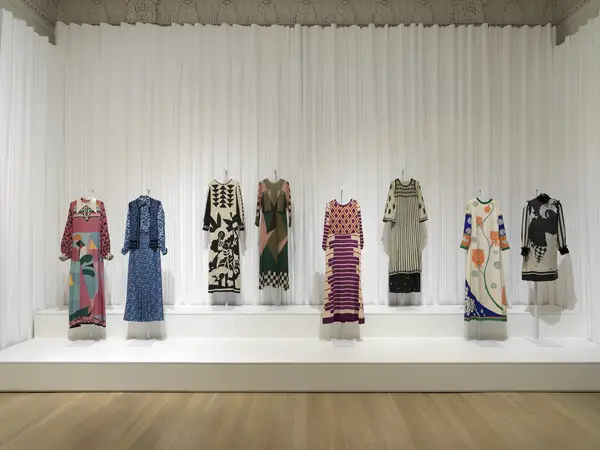
Image: Installation photo by Dario Lasagni. Courtesy the Jewish Museum, NY.
New Yorkers love their fashion exhibitions and there's a great one at The Jewish Museum. Mood of the moment: Gaby Aghion and the house of Chloé is the first museum exhibition to honor visionary Jewish entrepreneur Gaby Aghion (1921-2014) and her legacy as the founder of the French fashion house Chloé. The show casts new light on the label’s 70-year history with 150 garments and materials from the Chloé Archive. Through February 18th.
Whitney Museum of American Art
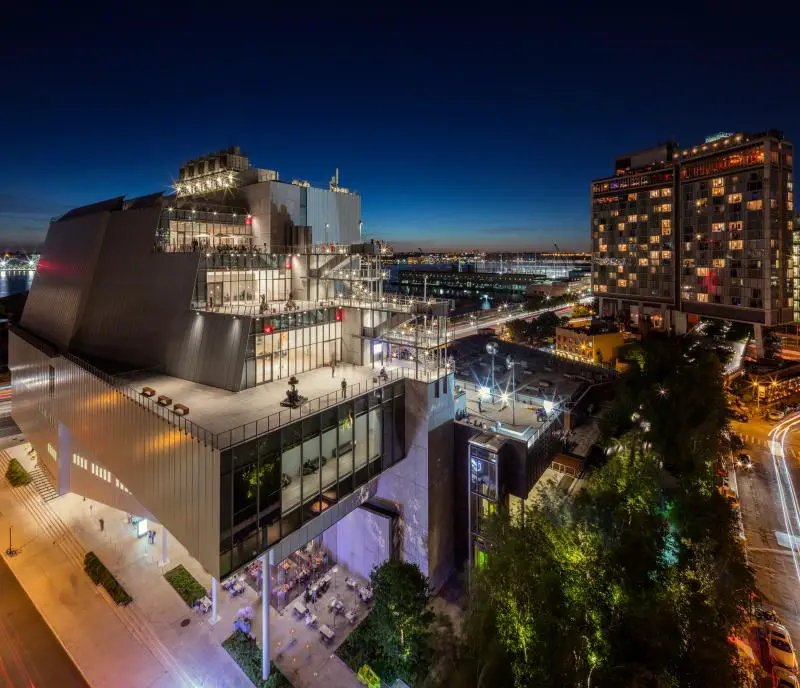
Photograph by Ben Gancsos ©2016.
With more than 25,000 works of art created by more than 3,700 American artists spanning the 20th and 21st centuries, the Whitney offers a multi-tiered approach to exploring the works of the collection, dedicated particularly to living artists. It’s well known for the Biennial, the longest running survey of American art, instituted in 1932. Its focus, as the name implies, is a look at art in all media held every two years.
Started by Gertrude Whitney in 1930 (fun fact—she offered her collection of more than 1,500 works of art by living artists to the Met, but they declined) the museum was the first to present a work of a video artist (Nam June Paik); it was also the venue where artists from Cindy Sherman to Jasper Johns were showcased in their first comprehensive museum survey.
While the museum includes work in all media, its strongest holdings are works on paper. It also has particularly fine holdings of artists including Alexander Calder, Brice Marden, and Georgia O’Keeffe.
99 Gansevoort St., whitney.org
Now on View at the Whitney | Inheritance
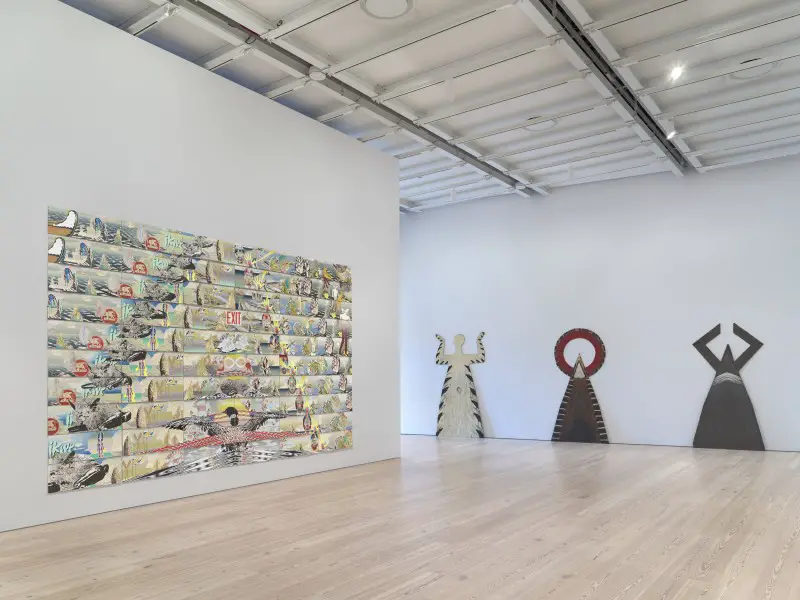
Installation view of Inheritance (Whitney Museum of American Art, New York, June 28, 2023–February, 2024.). From left to right: Andrea Carlson, Red Exit, 2020; Mary Beth Edelson, Shell Venus, 1974-75; Mary Beth Edelson, Red Sophia, 1974-75; Mary Beth Edelson, Louise, 1974-75. Photograph by Ron Amstutz.
What is an inheritance? The exhibit of the same name at the Whitney Museum explores the many different meanings of the word, drawing its inspiration from the 2020 film by Ephraim Asili.
Forty-three artists including Asili, Kara Walker, Sherrie Levine, and Kambui Olujimi are represented in the exhibit, which includes approximately 60 rarely seen works as well as new holdings. Sculptures, video, paintings, media installations, and photos from the 1970s forward look at the idea of legacy—though familial, historical, and even aesthetic lines. Works include Mary Kelly’s film Antepartum (1973) and Sadie Barnette’s installation Family Tree II (2022.)
The exhibit opens with works of art examining the cycle from birth to death. Various kinds of lineage are explored by theme in the galleries, including how artists take art history and reframe it in their work. Other kinds of inheritance include historical inheritance and even inheritance from ancestral memories. The topics covered are broad and ambitious: Covid, African religious traditions, the human lifespan, and sources of artistic inspiration. The topics, of colonialism and African enslavement are also explored through such artwork as Kevin Beasley’s slab sculpture The Road (2019) and United States of Attica, a 1971 lithograph by Faith Ringgold.
The exhibition is moving and sprawling, covering a multitude of questions about inheritance—and its own legacy.
The real questions the exhibition poses: How did we get here? And equally as important….where are we going? Through February 4th.
The Frick Collection
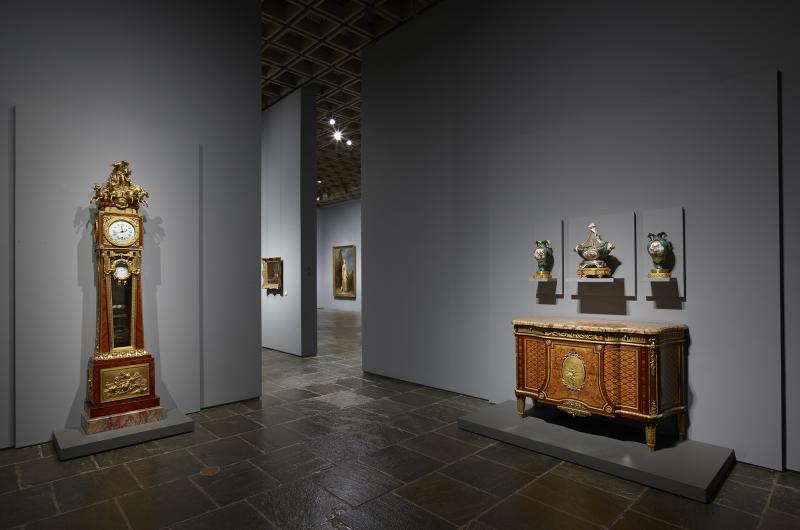
Gallery view by Joseph Coscia Jr.
Magnate Henry Clay Frick (1849–1919) bequeathed his home, paintings, sculptures, and decorative arts to public enjoyment. Until March 3rd, you can experience masterpieces from the Renaissance to the early 20th century in a modern frame at Frick Madison, a temporary stopover while The Frick Collection completes a renovation at its uptown home. The Frick is known particularly for its focus on European sculpture and decorative arts, as well as Old Master paintings. Artists on display include Goya, Titian, Rembrandt, and Whistler. Not to be missed: the museum’s eight portraits by Anthony van Dyck displayed in one gallery for the first time.
945 Madison Ave., frick.org
Cooper-Hewitt, Smithsonian Design Museum
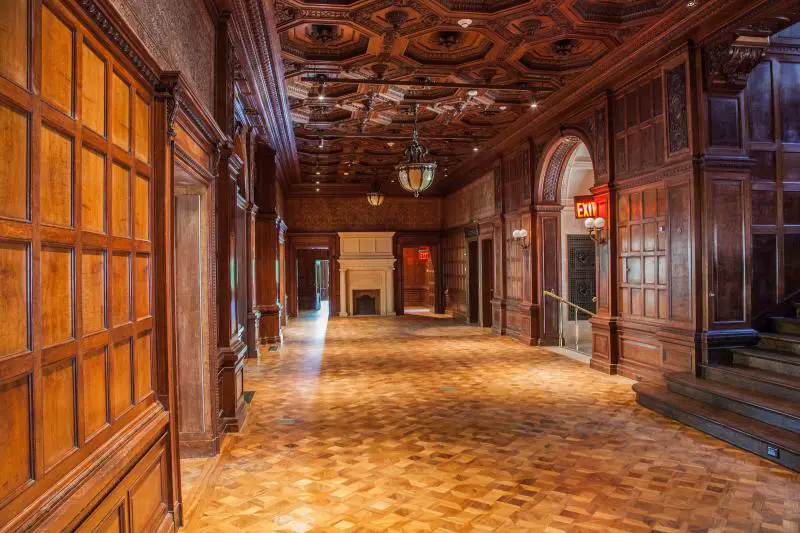
Cooper Hewitt, Smithsonian Design Museum, Great Hall. Photo by James Rudnick © 2014 Cooper Hewitt, Smithsonian Design Museum.
The Upper East Side’s Cooper Hewitt, Smithsonian Design Museum is the only museum in the United States entirely dedicated to contemporary and historical design. It’s home to 215,000 objects spanning more than 30 centuries. Rotating exhibitions increasingly confront contemporary issues, from the role of design during a crisis to the prevalence of facial detection technology.
The collection includes an incredible array of design-centered objects, from miniature silver forks from the 1940s to molded polyurethane chairs that look like spinning tops. Plus 1800s’ bandboxes, used for storing men’s collar bands, to wallpaper for children’s rooms and pre-Columbian textiles. Exhibitions have included “Design and Healing: Creative Responses to Epidemics,” “Face Values: Exploring Artificial Intelligence,” and “Botanical Lessons.”
2 E. 91st St., cooperhewitt.org
On View Now at the Cooper Hewitt: A Dark, A Light, A Bright: The Designs of Dorothy Liebes
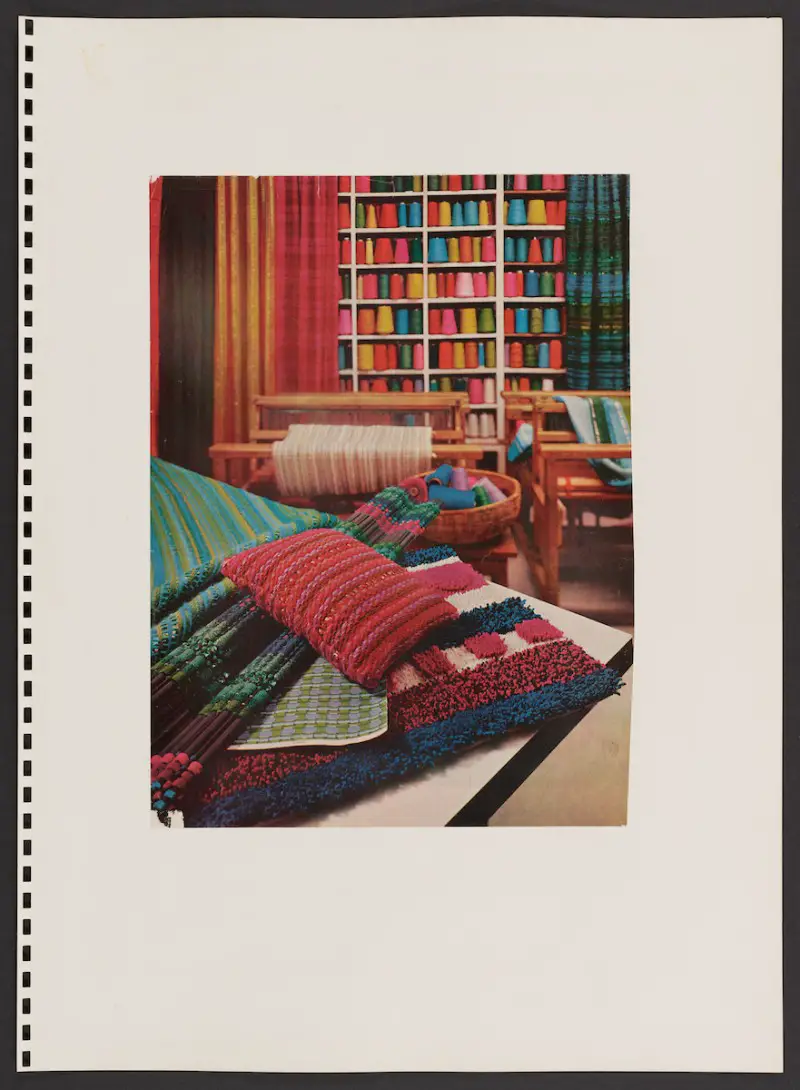
Dorothy Liebes Studio, New York City, as photographed for House Beautiful, October 1966; Dorothy Liebes Papers, Archives of American Art, Smithsonian Institution.
One of the most influential designers of the 20th century, Dorothy Liebes is credited with introducing both handcrafted items as well as dazzling pops of color to the modern interior. Her aesthetic was so popular, in fact, that it has its own name and sub-genre: the “Liebes Look” came to mean eye-popping color, rich textures, and sometimes a glimpse of metallics. Her collaborations with architects including Frank Lloyd Wright and designers such as Pauline Trigere helped to implement an American aesthetic, visible in everything from industrial design to home interiors to film. Liebes’ work graced the United Nations Delegates’ Dining Room as well as Shangri La, the Honolulu home of Doris Duke, the heiress and philanthropist. An important part of Liebes’ work was that her fabrics were affordable, meaning they were more accessible to more people, and thus had a wide reach.
The exhibit examines not only the designer’s output, but also the details of her career as well as the full impact of her contributions overall. It features more than 125 works, including textiles, samples, fashion, furniture, photos, and documents.
“A Dark, A Light” includes five discrete sections ranging from “The Modern Interior,” which features Liebes’ handwoven fabrics, to “The Liebes Look," which showcases her facility for creating dramatic public spaces—on a budget. These include the First-Class Observation Room on the SS United States as well as American Airlines flagship 747. Hotel interiors such as the Persian Room at the Plaza Hotel and the Marco Polo Club at the Waldorf Astoria are also refenced. The final section, “The Idea Factory,” pulls samples from the museum’s permanent collection to showcase the designer’s willingness to experiment with new color combinations and materials.
And in case you want to try Liebes’ technique yourself, the title of the exhibition refers to her “recipe” for creating a color scene, whether in fashion or at home: “A dark, a light, a bright.” Through February 4th.
On View Now at the Cooper Hewitt | Give Me a Sign: The Language of Symbols
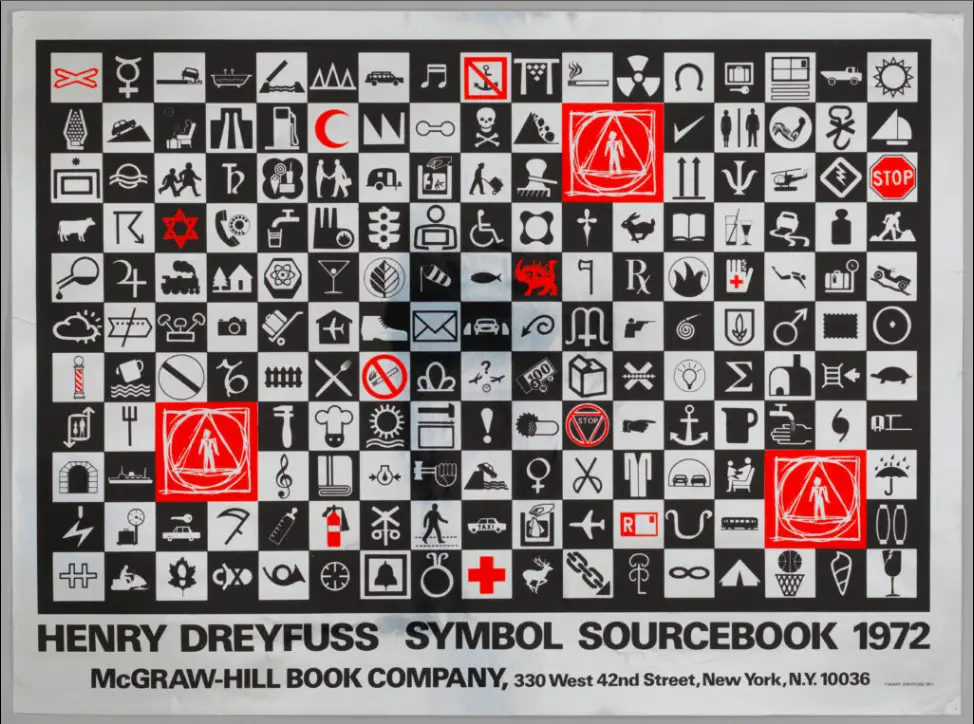
Poster, Henry Dreyfuss Symbol Sourcebook 1972, 1971; Lithograph; 45.7 x 61.3 (18 x 24 1/8 in.); Designed by Henry Dreyfuss (American, 1904–1972); Published by McGraw Hill Book Company (New York, NY, USA); Henry Dreyfuss Archive, Cooper Hewitt, Smithsonian Design Museum, 1972-88-1-28; Photo by Matt Flynn; Image © Smithsonian Institution.
Give Me a Sign: The Language of Symbols offers a fascinating look at the way symbols permeate our lives. The exhibit marks the 50th anniversary of Symbol Sourcebook: An Authoritative Guide to International Graphic Symbols by industrial designer Henry Dreyfuss, published in 1972. Dreyfuss advocated for the use of symbols to promote global communication; the book both compiled and categorized literally thousands of symbols used internationally. From the Stop sign to a gas pump to a skull and crossbones, the symbols on view show how they can do everything from keep us safe to demonstrate activism; show us how to get where we’re going and where to buy everything from food to medicine. Twenty-six categories from math to music are included, demonstrating how this common visual system literally helps run the world, and can communicate when words can’t. The history of the symbols is included as well, as is a section on emoji.
Think about the Olympics, the Nike swoosh, the dove and olive branch, the sign for wheelchair accessibility. Where would we be without them?
A large part of the exhibit is the opportunity for visitors to help create a symbol sourcebook by creating their own new symbols and participating in activities both in person and online.
A heart, an apple on a computer, a red and while soda can…and…whatever you design? Great symbols must come from somewhere…why not you?
Through September 2nd.
New-York Historical Society
The Gallery of Tiffany Lamps shows 100 illuminated examples within a dramatically lit, jewel-like space at the New-York Historical Society.
The New-York Historical Society is the city’s first museum, exploring New York and its inhabitants through collections that include paintings, sculpture, and artifacts from the colonial era to the present. The museum is especially known for its collection of Tiffany lamps, Audubon’s “Birds of America” series, and its Hudson River School paintings. Among rotating exhibitions is Enchanting Imagination: The Objets d’Art of André Chervin and Carvin French Jewelers, a dazzling display of meticulously crafted objets d’art on view to the public for the first time ever.
The DiMenna Children’s History Museum offers young visors a glimpse into New York’s past through the stories of young city dwellers who lived in New York from the late 17th to the 20th century; programs for kids include story time and workshops.
170 Central Park West, nyhistory.org
On View Now at The New-York Historical Society: Women’s Work
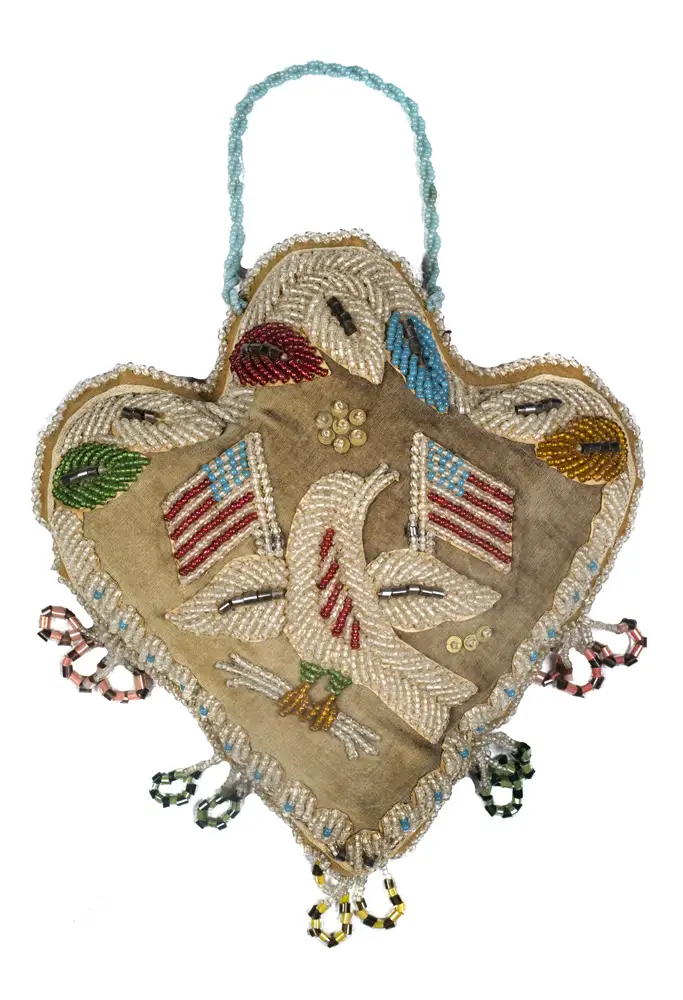
Unidentified artist (Native American, Haudenosaunee), Haudenosaunee beaded
pincushion, 1890-1910. Cotton, glass beads, linen, paper, metal paillettes, plant material. New- York Historical Society, Gift of Arnold and Dora Stern, 2017.53.1.
What is “women’s work?” Forty-five objects are showcased by The Center for Women’s History, with the aim of examining what the phrase “Women’s Work” really means, and how it ultimately defies categorization. The works are all drawn from New-York Historical Society’s own Library and Museum, and spans approximately 300 years. The exbibit includes a 20-the century doctor’s dissection kit, a magnificent 19th-century mahogany cradle, and a button with the slogan “Shirley Chisholm for President.” The cradle makes a big impact—both size wise and emotionally--because childcare is what is so often associated with phrase “women’s work.” Indenture documents, photographs, and military uniforms are also included.
A Haudenosaunee Beaded Cashion is visually striking—it was associated with the kind of work that women did in indigenous groups, in the late 19th century. But t was also a time when a new business model took hold--one that adapted traditional beadwork for a new souvenir market. A pin cushion, for instance, was created to sell to White tourists visiting Niagara Falls. The exhibit also shows how the very phrase “women’s work” has changed depending on the time. A sly reminder that women were traditionally seen as housekeepers can be seen in a tavern license that was given to Mary Dixon in 1784; serving food and drink can be seen as an extension of the work that women were “allowed” to do.
Traditionally, the phrase “Women’s work” has carried a hint of the pejorative, and an implicit dismissal—women’s work is inferior, not on a par with “men’s work.” Often, items made by women were identified with being less “good,” and therefore were worth less. The exhibition seeks to redefine that notion by showing how essential women’s work is to society, and how, despite the strides that have been made, much gender inequality in the workforce still exists. Through August 18th.
South Street Seaport Museum
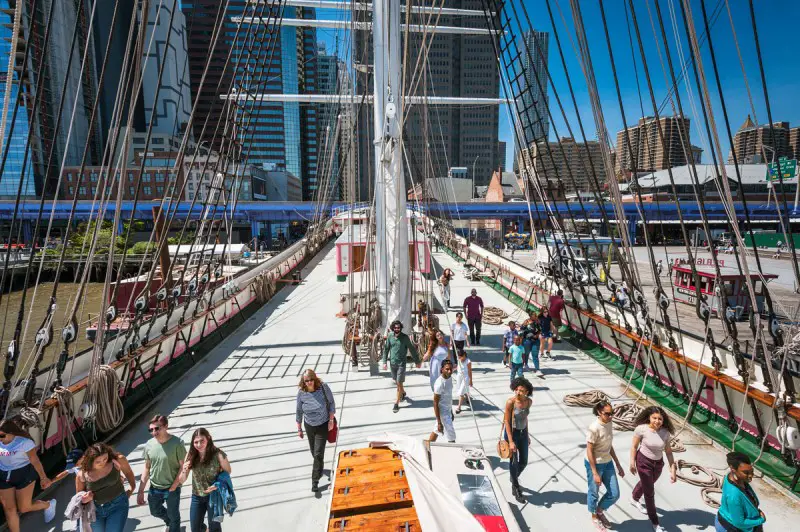
1885 tall ship Wavertree via the South Street Seaport Museum
Not so much a museum as a sprawling, multi-faceted campus, the South Street Seaport Museum encompasses historic sailing vessels, a working 19th-century print shop, a collection of artifacts and works of art, and maritime reference library.
Where to begin? Visit the museum galleries—your first stop should be the introduction gallery, which examines the role of the Seaport and surrounding area in helping New York become the bustling seaport it was at the beginning of the 20th century.
Another must-see is Millions: Migrants and Millionaires Aboard the Great Liners, 1900-1914. The exhibit examines in depth the disparity between first- and third-class passengers traveling in ocean liners in the beginning of the 20th century.
And absolutely not to be missed: the 1885 tall ship Wavertree, permanently moored at Pier 16 (Fulton and South Streets), is a highlight. Tours are available every hour and include access to both the main deck and quarter deck. The highlight? The massive cargo area, visible from a viewing platform. It gives a sense of the incredible scope of the ship, as well as its inner workings and intricate design.
The whole immersive experience is a great way to spend a morning; from the moment you enter the complex and see the cobbled streets and the ships and the water, you really feel like you’re steeped in the history and culture of the time. Numerous programs are offered, for both adults and kids—check out the family activity weekends that illustrate life at sea, free with admission, as well as Sea Chanteys and Maritime Music, offered the first Sunday of the month. It features performance of maritime songs by local artists.
Even more of an incentive? A new policy of pay-what-you-wish admission is now in effect, Wednesday-Sunday 11am-5pm.
12 Fulton St., 212-758-8600, southstreetseaportmuseum.org
Museum of the City of New York
MCNY exterior, Filip Wolak.
The Museum of the City of New York interprets, celebrates, and documents New York—past, present, and future.
Many of the museum’s nearly 750,000 objects make appearances in its special exhibitions, which have focused on topics including “Food in New York;” and “City of Faith,” plus ongoing exhibits like “Starlight,” a hanging light installation, and “Activist New York,” which looks at social activism from the 17th century right up to today.
The Prints & Photographs collection includes more than 400,000 prints and negatives from the mid 19th century to the present, including the work of such luminaries as Jacob Riis, who photographed the lower east side in the late nineteenth century. The linchpin of the Prints collection is the J. Clarence Davies Collection of 12,000 views of New York from the 17th-19th centuries, starting with the earliest view of New Amsterdam, shown in 1625-26.
The permanent collection also includes architectural drawings, furniture, theater memorabilia, textiles, and more. And if it’s on view, don’t miss the famed Stettheimer Dollhouse, an extraordinary work with details like miniatures by famous artists.
1220 Fifth Ave., mcny.org
Rubin Museum
Focused on the ideas, culture and art of the Himalayas, the subject of their permanent collection galleries, the Rubin Museum introduces visitors to an in-depth look at art from that region. The museum's 10-year Mandala Lab installation, for example, guides viewers through five experiences that encourage participants to embark on an inner journey centered on self-awareness as well as awareness of others. Many exhibits are up for an extended period, such as “Gateway to Himalayan Art” (below), which introduces viewers to forms, meanings, and traditions of Himalayan art in the museum’s collections.
K2 Friday nights feature free admission, plus cocktails music, exhibition tours, and more. Sundays bring free art-making workshops for families.
And plenty of programs are designed to help visitors destress, from mediation to writing exercises. (And who couldn’t use a little of that these days?)
150 W. 17th St., rubinmuseum.org
On View Now at the Rubin Museum: The Tibetan Buddhist Shrine Room
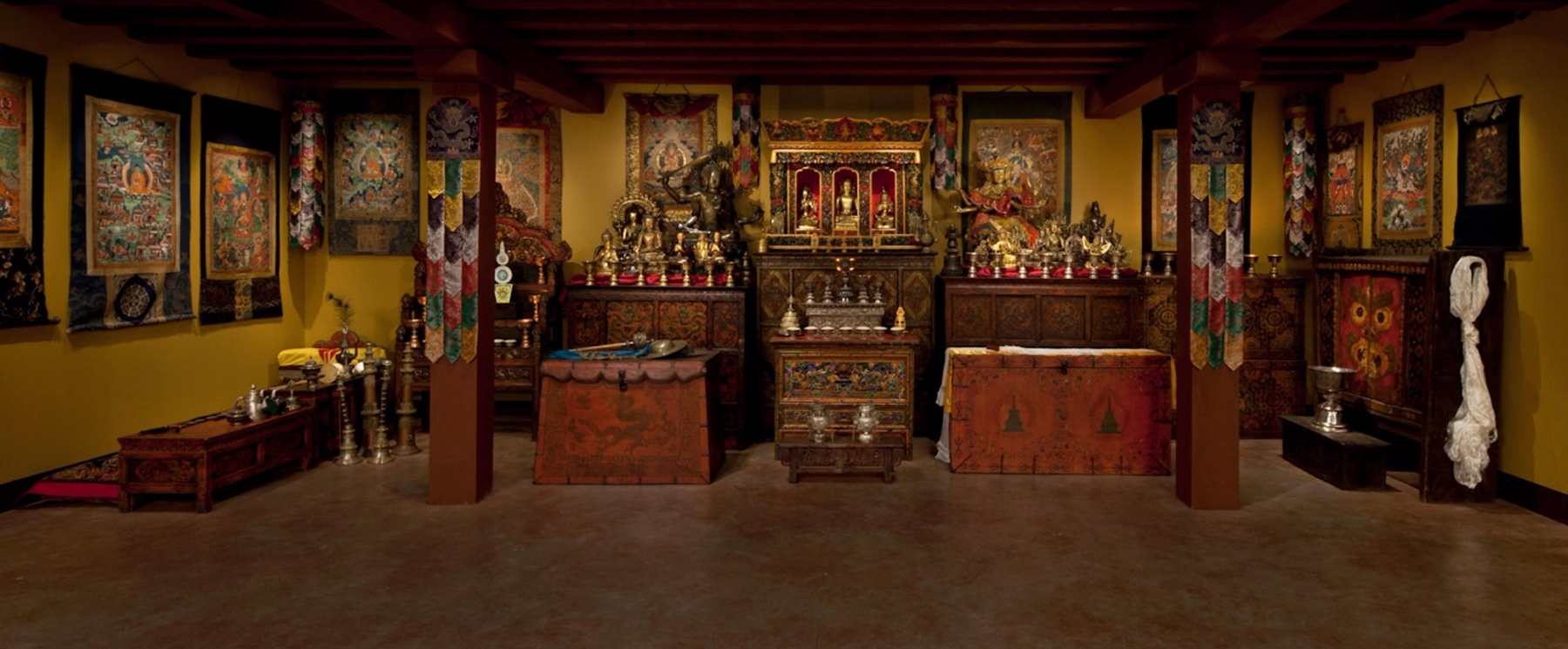
Image: Rubin Museum of Art.
Sometimes it’s easy to put off seeing an exhibition that you know will be there for a while, in favor of ones that are of shorter duration. And that’s understandable. But at some point you should seek out The Tibetan Buddhist Shrine Room.
The room is constructed and set up as it would be if it served as a private household shrine—a place that would be utilized for prayer, contemplation, offerings, and ritual. It incorporates elements of traditional Tibetan architecture as well as well as the color schemes of traditional Tibetan homes.
While it’s a space for relaxation and contemplation, the room is also a space for observation and discovery. Visitors will see musical instruments such as bells, handheld drums, conch trumpets, horns, and reeds. Scroll paintings known as thangkas, sculptures, and ritual items are also displayed. Simulated flickering butter lamps, incense (used during religious practices), and recordings of Tibetan monks and nuns chanting prayers also add to the serene ambience.
Take some time to admire the brocade silk textile decorations hung from the ceiling and also from the pillars; they’re made by traditional masters of applique craft. And check out the interactive touch screen; it offers a virtual tour of the Shrine Room.
The installation rotates very two years; each rotation features one of the four major Tibetan religious traditions. The Kagyu tradition is featured right now; it includes images of buddhas, bodhisattvas, and teachers specific to this branch.
Whether you’re there to relax, discover, explore, or contemplate, you’ll find a reason to enjoy The Shrine Room. In fact, you’ll probably find yourself doing a bit of all those things—and what better way to fully enter the experience?
Through October 18th, 2026.
Merchant's House Museum
Merchants House Parlor by Denis Vlasov. Photo courtesy Merchant's House Museum.
Nestled among taller buildings in a bustling neighborhood near NYU, the Merchant’s House Museum seems like a visitor from another era—which, in fact, it is. The first building designated as a landmark in Manhattan, the museum is the former home of the Tredwells, the wealthy family that lived there from 1833-1935. With more than 3,000 of the family’s possessions on view, the house includes household goods, decorative items, clothing, books, and furniture, including 12 chairs attributed to Duncan Phyfe, the famous furniture maker.
While clearly a museum, the house also feels lived in, as if a family member might appear at any moment to greet you. You can wander through the building at your own pace (and that pace might be slow, because the staircase is steep). Enjoy the displays on every floor, and take time to look particularly at the kitchen and the clothing, both of which sport incredible details. In the summer, a beautiful garden out back beckons.
And the museum has been in the public eye for another reason—it’s known as the most haunted building in New York. (Their website even has a section called “Ghosts.”) Strange sounds and sights have been noted in the house since the 1930s, when it opened to the public as a museum. Candlelight ghost tours and a monthly virtual show now capitalize on the phenomenon.
Come for the period details, stay for the paranormal—the museum has it all.
29 E. 4th St., merchantshouse.org
The Tenement Museum
The Tenement Museum tells the story of the working-class tenement residents who moved to New York from other parts of the United States and other parts of the world; in other words, the immigrants who added to the story of New York. The museum offers visitors a chance to—temporarily—become immersed in the world of these families through their living quarters, from kitchens to hallways. The museum is housed in an actual tenement building—the personal belongs found in the building became the foundation for the museum. Guided tours offer a rich glimpse into the world of these stories seen through time, and the intersection of the themes of identity, architecture, and urban development, among others.
In addition to museum tours, walking tours of the neighborhood are also available, adding to the depth of understanding of the neighborhood.
103 Orchard St., tenement.org
El Museo del Barrio
Showcasing the art of Latino, Caribbean, and Latin American cultures, El Museo del Barrio's collection includes more than 8,000 objects than span 800 years of art; it encompasses works of art from pre-Columbian Taino artifacts to 20th-century drawings, paintings, sculpture, and documentary films. Many of their programs are bilingual, including the Coqui Club, a bilingual toddler program.
Exhibitions have included “En Foco: The New York Puerto Rican experience 1973-74;” and “Reynier Leyva Novo: Methuselah,” a digital artwork that looks at the migration of a single monarch butterfly. Their permanent collection is divided into six thematic categories, including Urban Experiences; Expanded Graphics; African and Indigenous Heritages; Craft Intersection; Women Artists; and Representing Latinx.
1230 Fifth Ave., elmuseo.org
The Morgan Library & Museum
Once the personal library of financier J. Pierpont Morgan (his son transformed the building and its holdings into a public institution) the Morgan Library & Museum now offers a showcase for both the exquisite building, an Italian Renaissance-style palazzo, as well as its holdings of rare books, including historical manuscripts, early printed books, and some of the earliest forms of writing. Don’t miss the Gutenberg Bible, dating to the mid-15th century.
The museum hosts ongoing special exhibitions, but the not-to-be-missed venue and the heart of the building is the library itself, especially the East Room, also known as Mr. Morgan’s Library. With its three stories of books and a 16th-century tapestry depicting one of the seven illuminated manuscripts, it’s easy to spend all your time in there, simply gaping at the astounding room. (It’s often been referred to as the most beautiful room in New York.)
The museum now includes a performance hall, reading room and a central court, connecting the buildings--and the people--to the art, as it’s somewhat reminiscent of an Italian piazza.
225 Madison Ave., 212-685-0008, themorgan.org
On View Now at The Morgan Library & Museum: Medieval Money, Merchants, and Morality
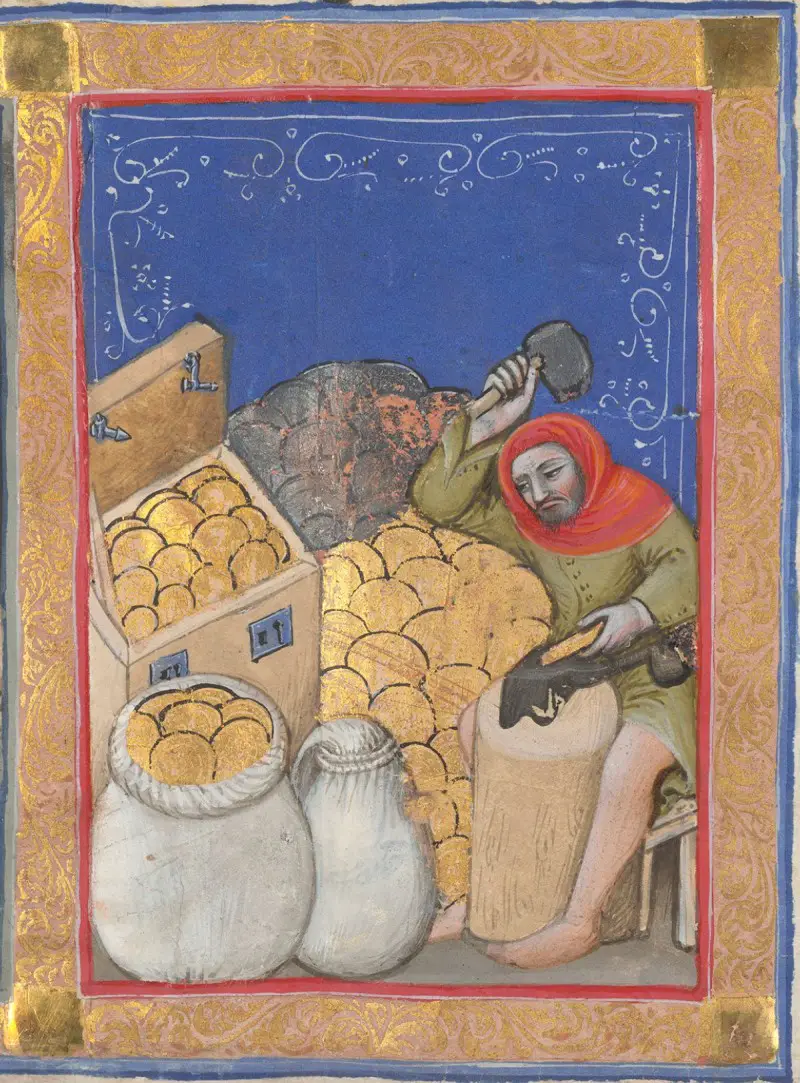
Leaf of a Register of Creditors of a Bolognese Lending Society, Italy, Bologna, ca. 1390–1400. Single leaf. The Morgan Library & Museum, MS M.1056, fol.
The Morgan Library & Museum is a showcase for both its rare books and its exquisite Italian Renaissance-style palazzo setting. On display now is Medieval Money, Merchants, and Morality, looking at the economic revolution that took place at the end of the Middle Ages. The show draws on manuscripts from the Morgan’s collection along with objects like a renaissance purse, a brass alms box, and a hoard of coins. Through March 10th.
Brooklyn Museum
With a strong permanent collection as well as an incredible array of special exhibitions, the Brooklyn Museum is the city’s second largest museum and contains one and a half million works of art. It’s housed in a beaux Art building by the firm of McKim, Mead & White (who also designed part of the Morgan Library). Founded in 1989, it was initially designed be the largest art museum in the world; even if it’s not, it’s still spectacular. The museum is particularly strong in Egyptian and American art; don’t miss the Steinberg Family Sculpture Garden, which features salvaged architectural elements from throughout New York.
Special exhibits are wide-ranging and have included “Climate in Crisis: Environmental Change in the Indigenous Americas,” and “Death to the Living, Long Live Trash.”
Also notable: “The Dinner Party” by Judy Chicago, a massive table set with 39 place settings, each of which represents an important woman from history.
200 Eastern Parkway, brooklynmuseum.org
Queens Museum
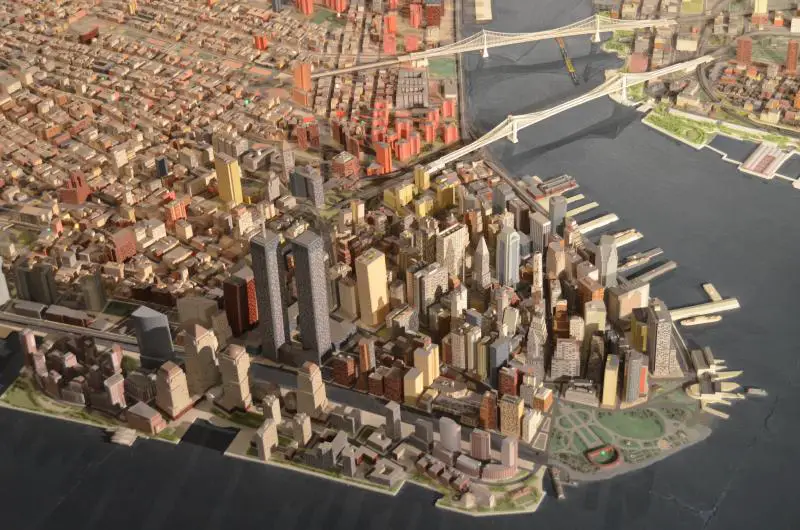
Chris Devers/Flickr.
One of the most interesting things about the Queens Museum is where it’s located: on the grounds of the1939-40 and 1964-65 World’s Fairs, in a building that housed the United Nations from 1946-1950 and was also the city’s official pavilion during the two World’s Fairs.
In keeping with their location, it’s not surprising that the museum’s mission is to provide arts and education programming for the people of New York, and specifically, Queens. Their permanent collection includes The Neustadt Collection of Tiffany Glass, on long-term view; it includes floral and geometric lamps as well as landscape and figural windows. Also on long-term view: Their Worlds’ Fair Collection. More than 900 objects are on display in their Visible Storage Unit, from plates to miniature models.
Its centerpiece is the Panorama of the City of New York (above), an incredible mini metropolis complete with each of the 895,000 buildings constructed prior to 1992.
New York City Building, Flushing Meadows, Corona Park, 718-592-9700, queensmuseum.org
On View Now at The Queens Museum: The Neustadt Collection of Tiffany Glass
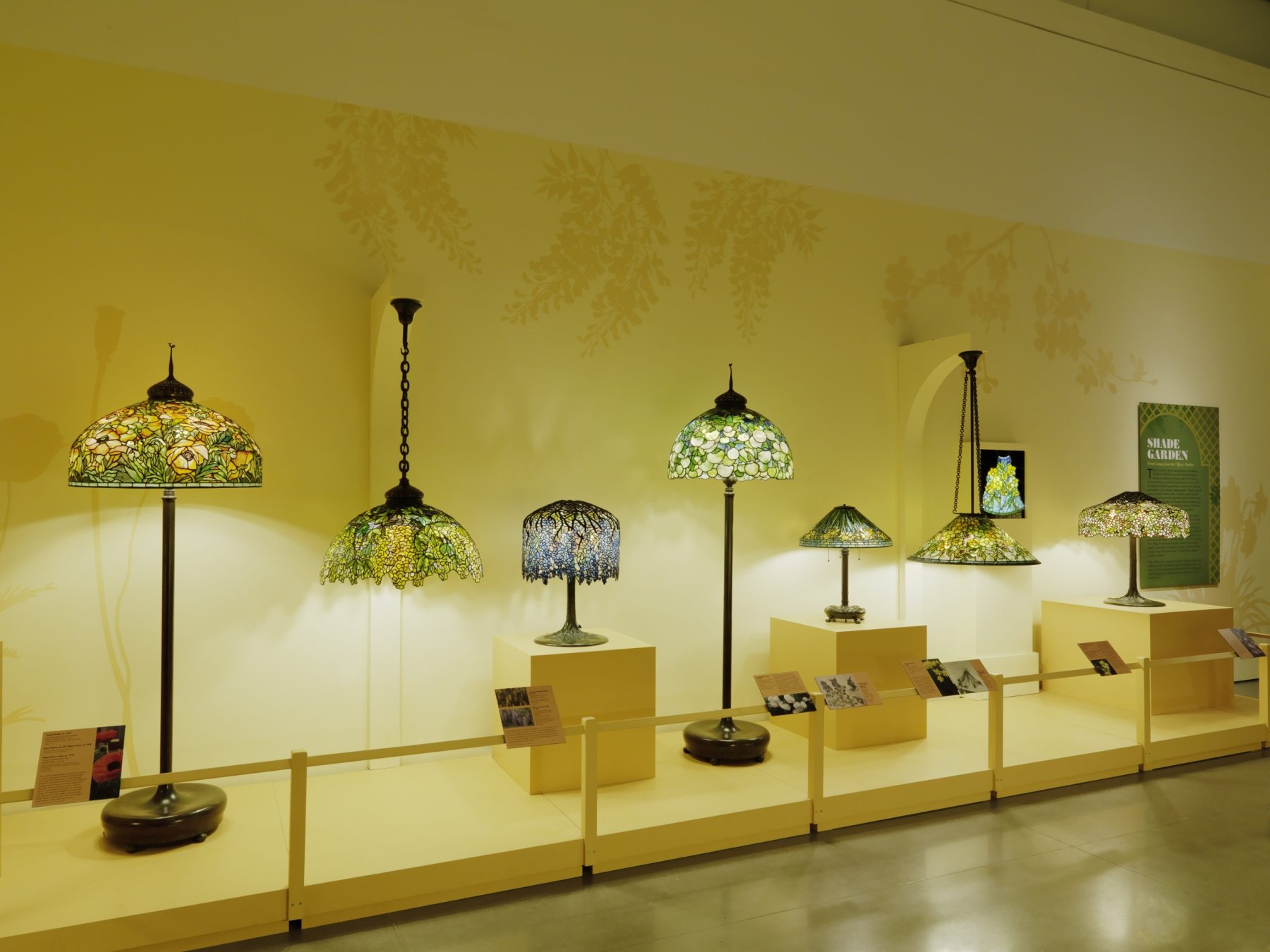
Image: Courtesy The Neustadt Collection of Tiffany Glass.
In the category of Peaceful Ways to Spend an Afternoon, The Neustadt Collection of Tiffany Glass at the Queens Museum offers an amazing selection of both landscape and figurative windows as well as floral and geometric lamps.
The story of how the collection came to be is almost as enticing as the collection itself: it was founded by Dr. Egon Neustadt and his wife Hildegard, Austrian immigrants who bought their first Tiffany lamp in 1935—for $12.50. They were enchanted by all things American, and especially intrigued by the lamp, which resembled actual flowers growing in an actual garden.
A special feature of the museum’s collection: an archive of flat glass and preserved glass “jewels” used by Tiffany Studios, important for the insight it provides into the development of the stained-glass movement at the beginning of the 20th century.
The Neustadt was established in 1969 as an independent non-profit collection dedicated to Tiffany’s work. In 1995, the organization partnered with The Queens Museum to share its collection though a permanent gallery and related educational programming. The exhibits rotate, with a general focus on leaded glass. Currently on view: Tiffany’s Lamps: Lighting Luxury. The exhibit examines leaded glass lamps, introduced in1898, and instantly popular because of their combination of practicality and beauty. They were made by hand, using pricey materials like cast bronze and hand-rolled glass. Worth it? Compare the prices and then the processes—and decide for yourself.
Fun fact: Tiffany’s foundries, glass furnaces and workshops were located in Corona, Queens, just a few miles from the museum.
Museum of the Moving Image
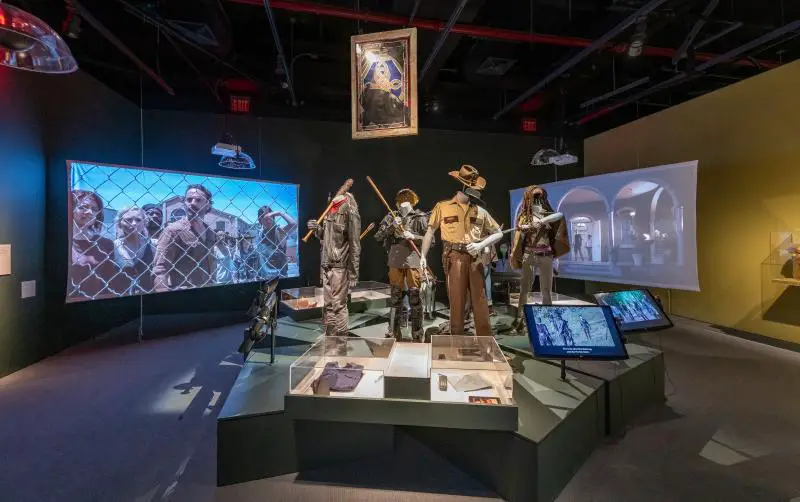
The centerpiece of the Living with The Walking Dead exhibition features the costumes of key characters Rick, Morgan, Negan, Carol, Daryl, Maggie, Michonne, Father Gabriel, and Jadis. Image: Thanassi Karageorgiou/Museum of the Moving Image.
The only museum in the country dedicated to all forms of the moving image, the Museum of the Moving Image offers insights into all facets of the medium, from programs of classic films to discussions with luminaries in the world of film and TV.
The museum offers options for everyone from the pop-culture fanatic to the serious student of film history. Exhibits have included a study of The Walking Dead TV show, a retrospective of the work of Japanese documentary filmmaker Noriaki Tsuchimoto, and an interactive exhibit on stop-motion animation.
“Behind the Screen,” the museum’s core exhibit, offers artifacts centered around creating, promoting, and exhibiting TV, movies, and digital media; these include licensed merchandise, fan magazines, costumes, video and computer games, and even movie theater furnishings. Over 1,400 objects are currently on display.
The museum also offers great programs for kids, teens, and families, and have included game labs for teens and an exploration of the work of Jim Henson.
36-01 35 Ave., Astoria, Queens, movingimage.us
Neue Galerie
Celebrating works of art created in Austria and Germany; the Neue Galerie focuses on important movements of the 20th century. For the former, there’s an emphasis on the works of Max Beckmann, Ernst Ludwig Kirchner, and Emil Nolde; as well as artists of then Bauhaus; the relationship between the fine and decorative arts in Vienna around 1900 is the focus of the latter.
The museum celebrates its 20th anniversary with “The Ronald S. Lauder Collection,” featuring approximately 500 works of art from collection of the museum’s founder.
And while you’re there, a visit to Café Sabarsky is highly recommended; if you want to skip the man course and head right to dessert, we won’t tell.
1048 Fifth Ave., neuegalerie.org
The Drawing Center
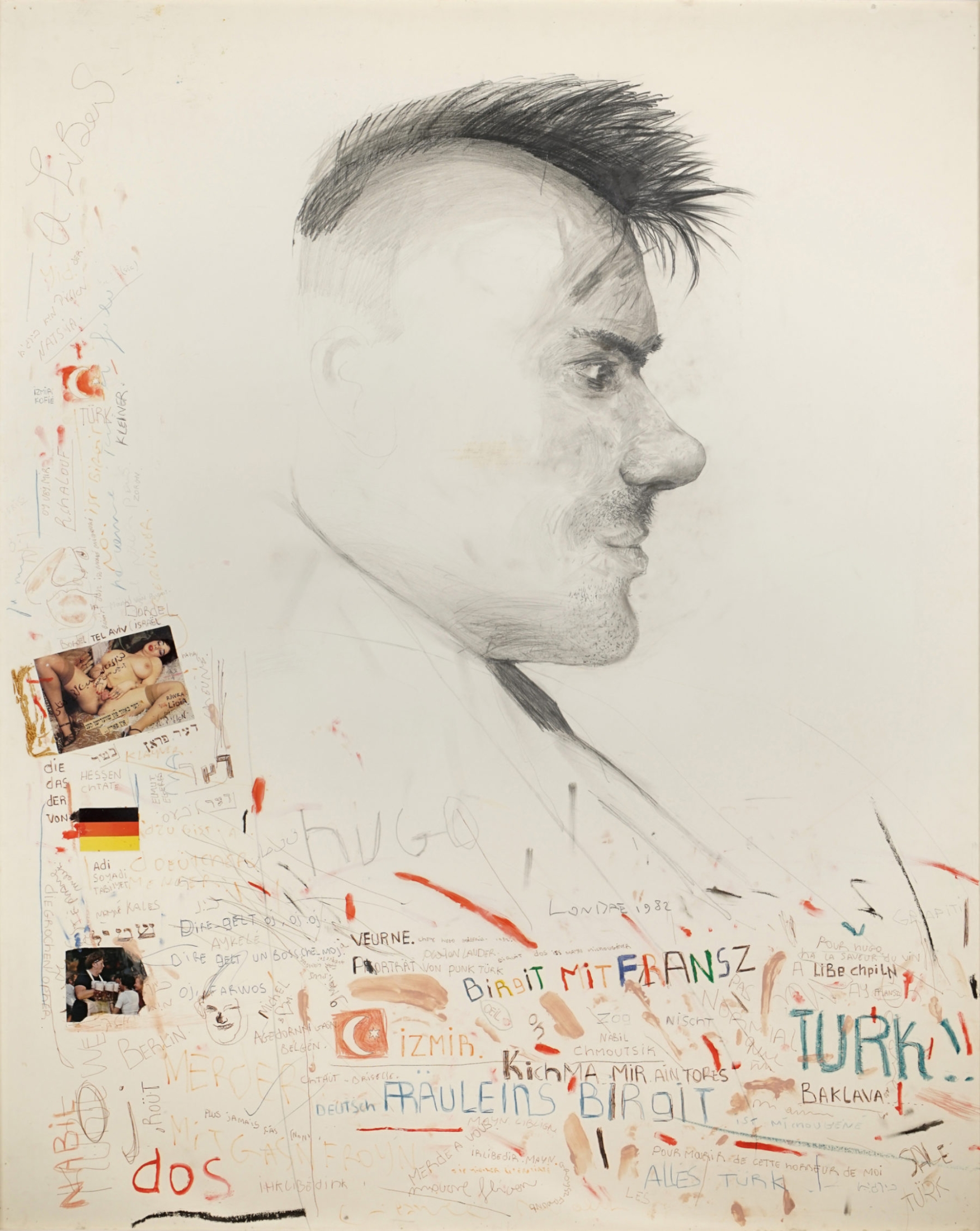
Stéphane Mandelbaum, Portrait of punk tück (Hugo), 1984. Felt pen, colored pencil, graphite lead and collage on paper, 148.5 x 119 cm. Collection Gil Weiss © Stéphane Mandelbaum Estate.
Founded in 1977 by Martha Beck (1938–2014), The Drawing Center has its exhibition space in SoHo. The center explores the medium of drawing as a vital force in contemporary art and culture. On view through February 18th is the show Stéphane Mandelbaum.
With drawings that plumbed the depths of the horrors of Nazi Germany, Belgian artist and draftsman Stephane Mandelbaum used his art to examine both his own persona as well as the unceasing terrors that were unfolding around him. Figures like Joseph Goebbels and Ernst Rohm populate his artwork—but so do poet Arthur Rimbaud and writer and filmmaker Pier Paolo Pasolini.
The artist juxtaposes images of Nazis with the Hebrew alphabet; he also included words in Yiddish, which he taught himself. They add a deep sense of poignancy, but also highlight the violence around him: Mandelbaum himself was the grandson of survivors; the fact that he was grappling with that legacy is evident in paintings that often a show images that are shocking and horrific—oversized images of Nazis juxtaposed with caricatures, doodles, figures from popular culture, even snippets of pornography, and multipole, random lists. (The artist himself was murdered when he was only 25 as a result of a bizarre robbery attempt.) Much speculation has been made about his life and art—what is true, and what is not? (The artist was known to lie even in his own diaries about things that never happened, at places that didn’t exist.)
The result of his art, however, is a painful world that many people would prefer to avoid or bury—shocking, uncomfortable, even vulgar—but is proof that Mandelbaum himself chose not to.
35 Wooster St., 212-219-2166, drawingcenter.org
Bronx Museum of the Arts
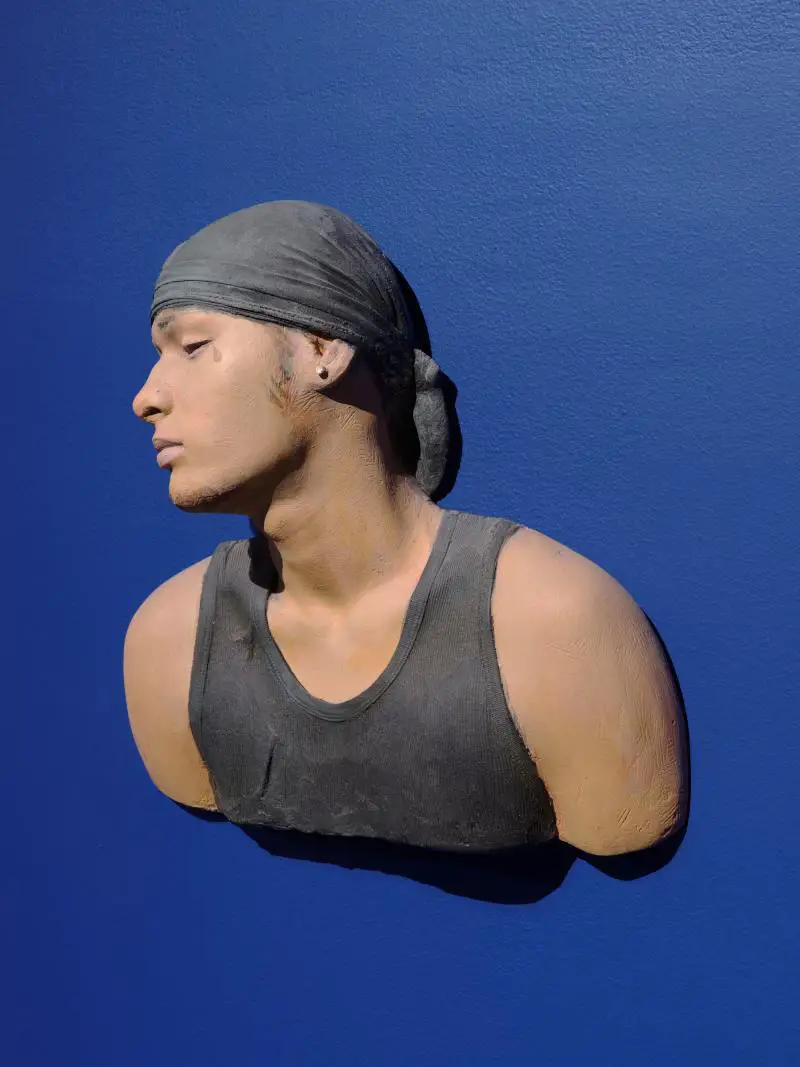
Previous exhibition; John Ahearn, Scorpio, 2008. Acrylic on plaster, 20 x 20 x 8 inches. Courtesy of Martha Cooper, New York.
A contemporary art museum, the Bronx Museum of the Arts aims to connect its audiences the urban experience through both its permanent collections and special exhibitions as well as its education programming. The exhibits generally revolve around the Bronx itself, with an emphasis on social justice. The museum's imaginative roster of programming runs the gamut from salsa lessons and a salsa party to family days and conversations with artists. Teen and afterschool programs focus on older students, including Teen Council, a paid internship program.
An added bonus? Admission is always free.
1040 Grand Concourse, bronxmuseum.org
Museum of Arts and Design
Looking for an afternoon surrounded by intriguing design objects? Get Mad. Or rather MAD—the Museum of Arts and Design, which is filled with innovation in craft art and design. Among MAD's most creative offerings are the Artist Studios. Through the program, visitors can engage with artists working onsite by asking questions and observing their process.
Exhibits include “Queer Maximalism x Machine Dazzle,” the first solo exhibition of Matthew Flower (Machine Dazzle), which displays his creations for theater as well as photography and video. Don’t miss the permanent exhibit “Seeing is Believing” by Judith Schaechter. Commissioned for the museum when it opened in its new building in 2008, two hundred geometric images create a dazzling riff on a medical rose window.
2 Columbus Circle, madmuseum.org
Now on View at the Museum of Arts and Design | Taylor Swift: Storyteller
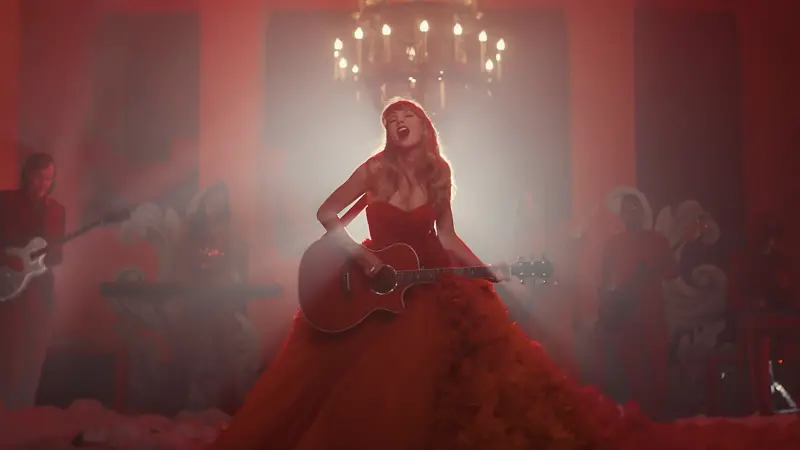
“I Bet You Think About Me” video still: courtesy of TAS Rights Management.
If you haven’t been able to get tickets to any of Taylor Swift's sold-out stops for her Eras tour (or even if you have), now’s the time to experience her work in a different kind of venue. (Much like her tour, you need to purchase tickets, and they are timed entry.)
Taylor Swift: Storyteller at the Museum of Arts and Design includes the ballerina and cheerleader outfits from the "Shake It Off" music video; an ensemble from "Bejeweled;" and the red wedding dress and bellhop uniform from "I Bet You Think About Me (Taylor’s Version)", directed by Blake Lively.
Also featured: props, jewelry, ephemera, projections of music videos, and concert outfits from couture fashion houses. Museum goers can see oversized projections of the singer songwriter’s handwritten lyrics, guitars she strummed onstage, and looks from all the singer’s albums. Swift’s shows are a fusing of music, costume, and stage design, and the exhibit offers an opportunity to observe the various components up close. (Private tours are available.) They offer some insight into the artist’s storytelling abilities, which are brought to life by all the components on view.
Shake it off? Not likely; the exhibit is perfect for the Swiftie—or Swiftie to be—in your life. Unsurprisingly, there’s a gift shop with Swift merchandise. You won’t just be able to get a behind-the-scenes glimpse of how the Taylor Swift magic is put together, you can take a piece of it home with you. Through March 24th.
American Folk Art Museum
Focusing on the self-taught artist, the American Folk Art Museum highlights individuals whose artistic experience has been personal rather than the result of formal artistic training. Folk art itself can cover a wide range of objects and interpretations, but is often utilitarian (a quilt, a weathervane), and reflects the life and identity of a community.
The museum’s collection includes more than 8,000 works of art from almost every continent, and ranges from quilts to bookplates to portraits. The airy, light-filled space often hosts a few exhibits at a time, many drawn from their own collections. Because it’s a relatively small space, and the museum generally features only a few exhibits at a time, you can easily see everything in offer in one visit.
The museum is the sole venue for the exhibition “Morris Hirshfield Discovered,” the most extensive assortment of his work ever displayed.
2 Lincoln Sq., Columbus Avenue at West 66th Street, folkartmuseum.org
Fotografiska
Billing itself as “a museum experience for the modern work,” Fotografiska offers rotating photography exhibits in immersive spaces. With five floors of exhibit space, the museum showcases its work in a landmark building built in 1894.
Founded in Stockholm in 2010, the museum now boasts six locations around the world, with an eye towards creating impact and change through its exhibits. Photographers whose works have been featured in New York include fashion photographer and music video director David LaChapelle, interdisciplinary artist Kia LaBeija, and three winners of the Leica Women Foto Project Initiative.
Among current exhibitions is Human / Nature: Encountering Ourselves in the Natural World, drawing on 14 prominent artists. The show explores the mutually beneficial and sometimes fraught relationship we have with nature, and reflects on the impacts of urbanization and climate change. (February 9th through May 25th, 2024.)
A wide array of events, from discussions over dinner to live music and performances, offers visitors a way to explore the exhibits in more depth.
281 Park Avenue S., fotografiska.com
The National September 11 Memorial & Museum
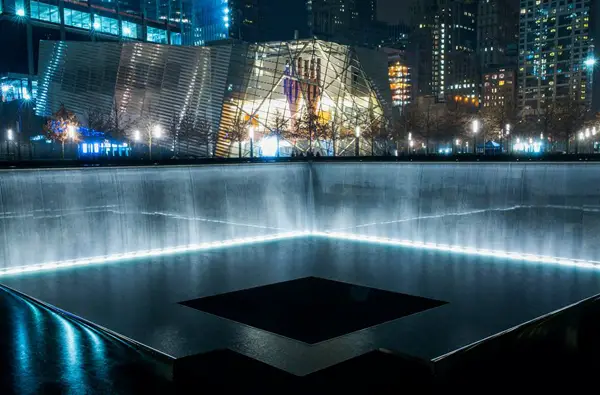
The National September 11 Memorial & Museum is not only a tribute to those who lost their lives in the attacks of 9/11, but an essential visit for tourists and New Yorkers alike.
The Memorial, officially called Reflecting Absence, features two waterfall pools surrounded by bronze walls that list the names of all the victims of both the 9/11 attacks as well as the 1993 World Trade Center bombing. More than 400 swamp white oak trees grow in the plaza in which the memorial is located. It opened on September 11, 2011, 10 years after the attacks.
Each pool, almost an acre in size, sits on the site of the former North and South towers. The waterfalls—the largest manmade falls in North America—drop 30 feet into a basin, and from there, drop another 20 feet into a smaller void. It’s a place meant for reflection and remembering and offers a moving tribute to the victims and the overwhelming sense of loss.
The museum itself focuses on the history of the attacks and the 1993 World Trade Center bombing. Visitors can descend into the original space of the World Trade Center. The Survivors’ Stairs, the staircase that people used to flee the building, lies at the end of the ramp. Memorial Hall and Foundation Hall, located in the space between the original towers, include a slurry wall, which remained after the attacks; it was originally installed in the 1960s to hold back the waters of the Hudson River when the World Trade Center site was first excavated.
Visitors shouldn’t miss the Last Column, the last piece of steel from the original World Trade Center to be removed from Ground Zero. Other exhibits examine the events that led up to the attack as well as the aftermath and the repercussions. Temporary exhibits often address those repercussions as well.
Properties are generally not considered to be eligible for the National Register of Historic Places until 50 years after they become historically significant. The World Trade Center site became eligible in 2004 after it was declared to be exceptionally significant in light of the impact of the event on the country.
Therein lies not just the significance of the museum and memorial, but the significance of a visit there. It’s an opportunity to pay tribute, to marvel at the resilience of a city and the people who live there, and to see that the past is, indeed, present. 180 Greenwich St., 212-312-8800, 911memorial.org
Asia Society
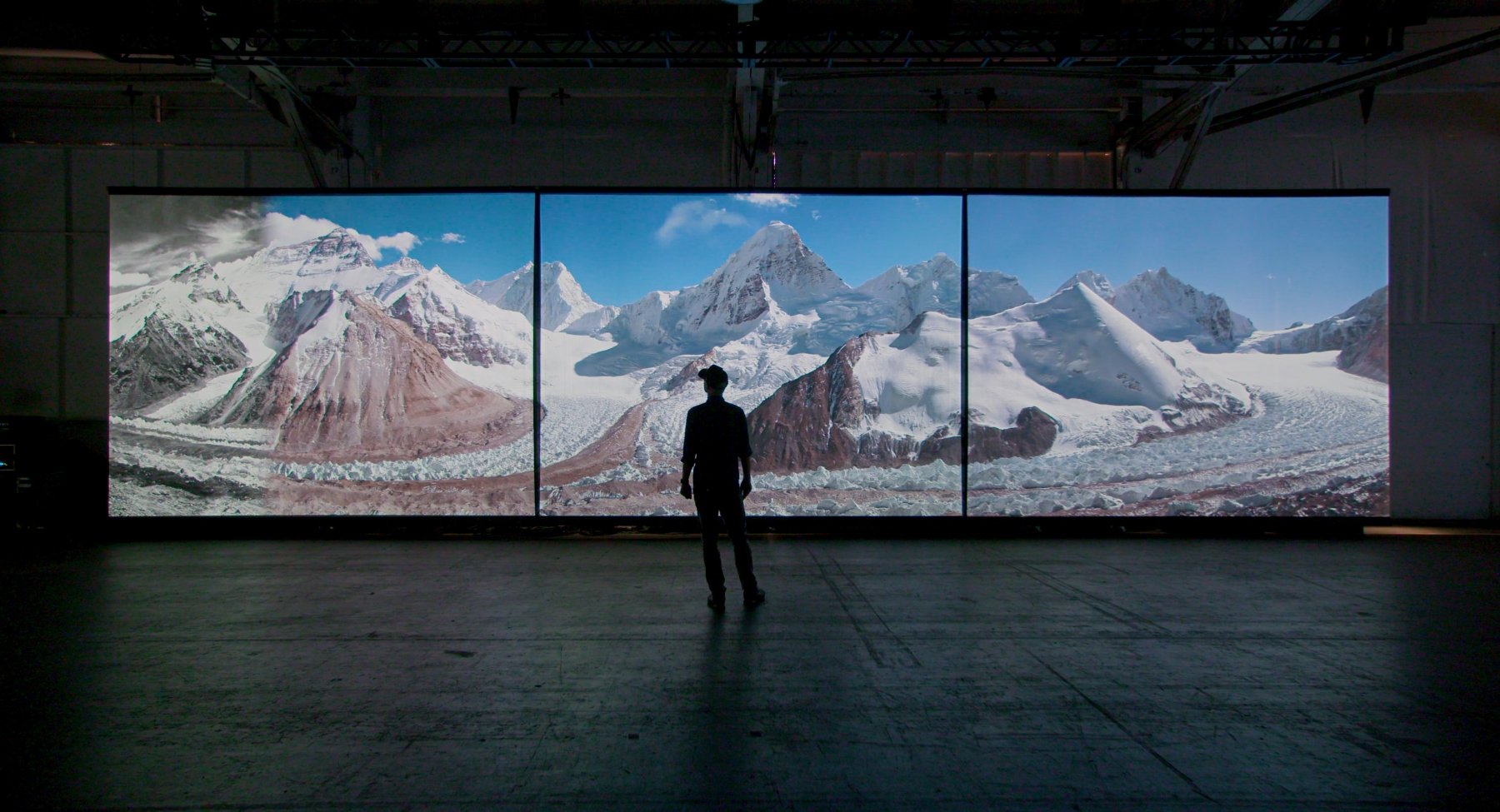
COAL + ICE installation view of David Breashears's Mount Everest, Main Rongbuk Glacier, Tibet, China, 2007. Photograph by Leah Thompson.
On the Upper East Side, Asia Society works to deepen the connections between the U.S. and Asia. Galleries here show traditional, modern, and contemporary Asian art, and organize performances and other happenings.
Opening on February 13th is COAL + ICE, an immersive photography and video exhibition that visualizes the the climate crisis and some creative solutions. The work of more than 50 photographers from China and around the world is on display, tracing a visual arc from deep within coal mines to the melting glaciers of the greater Himalaya, and across the globe where rising sea levels and extreme weather events are making their presence felt. Through August 11th.
725 Park Ave., 212-288-6400, asiasociety.org/NYC
Museum of Chinese in America
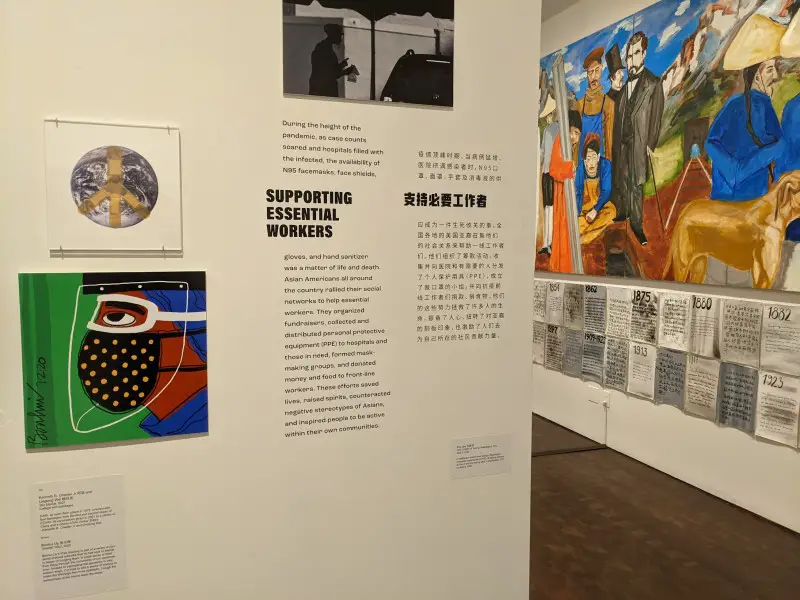
By Kches16414—Own work, CC BY-SA 4.0
The Museum of Chinese in America offers a number of ways to experience and enjoy its collections: through rotating exhibits, by exploring the largest research center of Chinese American artifacts in the country, and through its public and education programs.
Now housed in a Maya Lin-designed building on Centre Street in Chinatown, the museum, which began as the New York Chinatown History Project, promotes the understanding of the Chinese-American experience, and also documents its history.(Note: a fire in 2020 destroyed a part of its collections; MOCA on the Road was created as a response to that calamity. The initiative involves stopping at several cities across the country and strengthening collection efforts nationally.)
The museum also offers an engrossing assortment of programs, from a Chinese tea tasting to mixers with music and games.
And don’t miss the Journey Wall, also designed by Maya Lin—Chinese Americans can honor and remember family members, a graceful reminder of the links that bind us together, past and present.
215 Centre St., mocanyc.org
New York Transit Museum
You may already spend more time in the subway than you’d like, but we’re going to suggest one more trip down the subway stairs.
Except this time, you’re won’t be leaving the station.
The New York Transit Museum—naturally—lies down a flight of subway steps in Brooklyn. Founded in 1976, the museum tells the story of mass transportation in the city, from the engineering marvels that designed the subway system to the workers who helped build it.
Housed in an actual 1936 subway station, the museum offers a rotating exhibit of 20 vintage subway and elevated cars that date back to 1907. The best part? Visitors can board the cars, spin their way through a procession of turnstiles (especially popular with kids), and sit at the wheel of a city bus (also popular with the under-12 set). It’s fascinating to trace the evolution of both the subway and latest technology as you explore the various cars.
The museum also offers changing exhibits that focus on the history—and future—of mass transit. These exhibits often include photographs, ephemera, and objects such as fare boxes, parking meters, fire hydrants, and traffic lights. The permanent collection (worth exploring) includes Steel, Stone, and Backbone: Building New York’s Subways, which looks at the construction methods that were needed to build the city’s first subway system at the turn of the 20th century; as well as Moving the Millions, which highlights the subway’s evolution.
This subway ride is worth it; no endless waits on the platform required.
99 Schermerhorn St,, nytransitmuseum.org
The Museum at Eldridge Street
Photo by Rick Naramore.
Housed in a gorgeous National Historic landmark on the Lower East Side, the Museum at Eldridge Street is actually part of the Eldridge Street Synagogue, opened in 1887.
It’s the first great house of workshop built in America by Jewish immigrants from Eastern Europe, and stands today as a marker of the historical wave of Jewish immigration to the Lower East Side.
1887 saw a time of mass immigration to the United States. Between 1880 and 1924, more than 25 million immigrants, including 2.5 million Jews, came to this country. Amazingly, almost 85% of Jewish immigrant from Eastern Europe immigrated to New York City; about 85% of those in turn settled on the Lower East Side. Previous synagogues had been repurposed from other structures such as event halls or even old churches; the Eldridge Street Synagogue was created from the ground up.
A restoration was competed in 2007, and The Museum at Eldridge Street opened to the public. In 2010, artist Kiki Smith and architect Deborah Gans created an enormous stained-glass window for the space, a must-see when visiting. The building was designed by architects Peter and Francis William Herter, who received numerous commissions on the Lower East Side after the synagogue was erected. The Moorish revival building includes a 70-foot-high dome and barrel-vaulted ceiling, hand-stenciled walls, an intricate interior wooden staircase, stained glass, and brass fixtures.
Visitors can take tours that focus on American Jewish history, immigration, and the history of the Lower East Side itself. The museum stands as a testament to the neighborhood, the people, and the city, not to mention the soaring architecture and the beauty of the interior, which feels both grand and intimate, much like the city that surrounds it.
Step inside the landmark Eldridge Street Synagogue and step back in time, as you learn about the Jewish immigrants who found religious freedom in their new country, the opulent sacred space they built in 1887, and the 20th-century restoration that saved this decaying masterpiece. You can experience the magic on a docent-led or self-guided tour. 12 Eldridge St., 212-219-0302, eldridgestreet.org
Intrepid Sea, Air & Space Museum
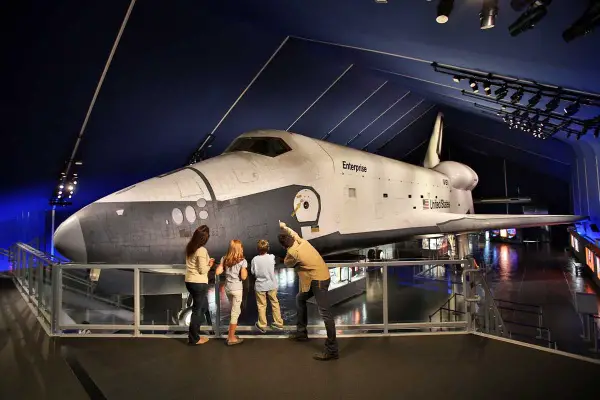
Enterprise photo by Svetlana Jovanovic.
One of the great things about New York’s museums is that there’s pretty much one for every mood, whether you’re feeling introspective or in need of checking out the latest special exhibit. What about when you’re feeling somewhat adventurous? That’s when to visit Intrepid.
The former aircraft carrier was launched in 1943 and fought in World War II—it survived five kamikaze attacks and one torpedo strike. It also served in both the Cold War and the Vietnam War. Decommissioned in 1974, it now stands ass the focus of the Intrepid Sea, Air & Space Museum.
On such a vast ship, where do you start? We suggest at the top, on the flight deck. (Note: great photo ops and great city backdrops.) Seventeen aircraft are housed there, representing all five branches of the U.S. Armed Forces.
Don’t miss the Space Shuttle Pavilion, home to the space shuttle Enterprise; this NASA orbiter prototype led the way to the country’s space shuttle program. You can also explore the nuclear-missile submarine Growler through interactive exhibits, artifacts, and immersive experiences—and then actually experience he submarine itself. It’s the only American guided missile submarine open to the public, and gives visitors a chance to explore everything from the mess hall to the aft torpedo room. (Note: It’s not for the claustrophobic.)
You can also take a guided tour on the British Airways Concorde (the Concorde Alpha Delta G-BOAD, to be exact); it holds the record for the fastest Atlantic crossing by any Concorde, accomplished on February 7th, 1996. It took two hours, 52 minutes, and 59 seconds. (Note that it's temporarily off the Flight Deck while it gets a spruce up.)
In addition to the permanent collection, the museum also hosts special exhibits. The museum’s latest permanent exhibition is Final Flight: The Story of a WWII Corsair. You’ll discover the story of an American fighter aircraft and its pilot through artifacts, photos, and an installation of the engine and a section of the wing.
The museum is also a great destination for kids; as if the collection itself weren’t already enticing, frequent science demonstrations, festivals, and activities are also a draw.
And parents—it’s okay to be excited about a demonstration on robotic arms or a Girls in Science & Engineering Day. Adventure is out there, from the top deck on down, and it’s for everyone.
Pier 86, West 46th St. and the Hudson, intrepidmuseum.org
New York Public Library (NYPL) Stephen Schwarzman Building
.jpg)
A lock of Edgar Allan Poe’s hair, Thomas Jefferson’s handwritten copy of the Declaration of Independence, Malcolm X’s briefcase, the real-life Winnie-the-Pooh: the New York Public Library holds a lot more than books. For the first time ever you can explore a selection of the 56 million items in the collection with the opening of the Polonsky Exhibition of The New York Public Library’s Treasures. Ongoing.
476 Fifth Ave., 917-275-6975, nypl.org/spotlight/treasures
National Museum of the American Indian
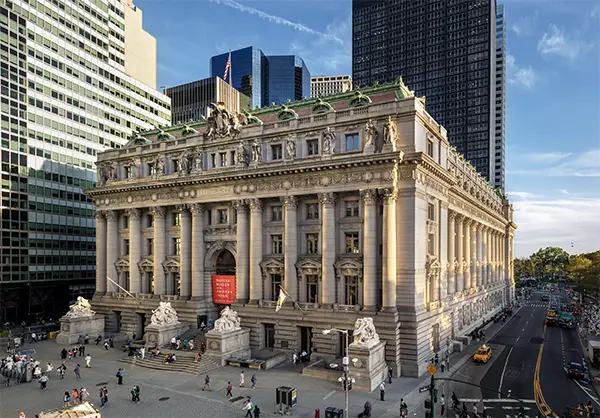
National Museum of the American Indian George Gustav Heye Center in New York City. Photo by David Sundberg (2016).
Sitting at the foot of the Wiechquaekeck Trail, an old Algonquin trade route (you might know it better as Broadway), the Smithsonian’s National Museum of the American Indian is where the many nations of America come together in the historic Alexander Hamilton U.S. Custom House. 1 Bowling Green, americanindian.si.edu
On View Now at the National Museum of the American Indian
The long-term exhibition Infinity of Nations: Art and History from the Collections of the National Museum of the American Indian showcases more than 700 objects and represents the tremendous breadth of the collections and the richness of Native art.
Photo courtesy C&G Partners, exhibit designers.
Paying homage to the land the museum was built on, Native New York looks at how the Haudenosaunee, Lenape and Long Island Native Nations have shaped the region. The exhibition takes visitors on a journey through the city and state to explore the question “What makes New York a Native place?” It looks at how Native communities have shaped the region, and how an understanding of New York history—and American history—is incomplete without understanding the role of Native Nations. The exhibition uses objects, media, interactives, and narrative comics to demonstrate how New York is, and always has been, a Native place.
AKC Museum of the Dog
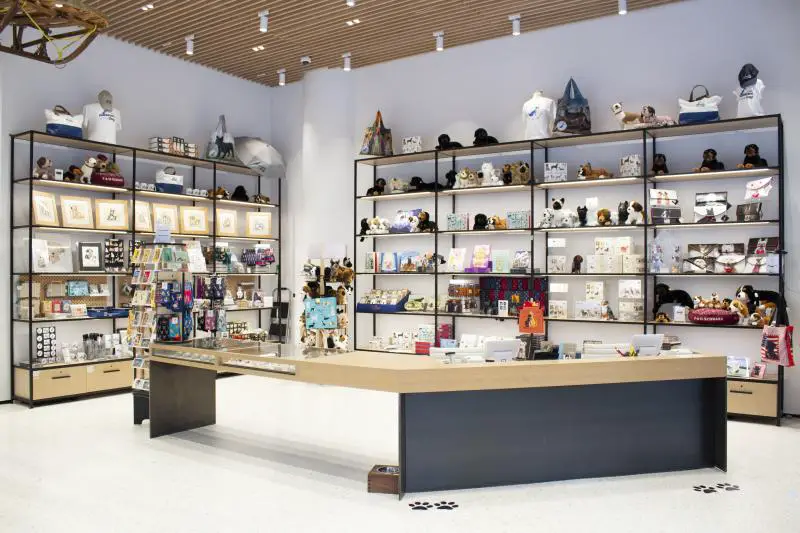
Dog days: In a city where canines seem to be prancing down every street corner, napping by every outdoor table, and running after Frisbees in every park, it’s no surprise that there’s an entire museum dedicated to them.
The permanent collection at the AKC Museum of the Dog includes a treasure trove of dog-related art and artifacts, from watercolors and prints to bronzes and ceramics. (Some of the world’s finest porcelain makers, from Royal Doulton to Meissen, are included.) Plus, you’ll find objects like trophies and collars.
Almost all dog breeds are represented here—although may not always be on display—but the museum has especially strong holdings in depictions of German Shepherds, Bulldogs (those two are currently in in the top five most popular dogs in the country), Mastiffs, and Great Danes.
Interactive exhibits are a fun addition here—the core exhibit is “Meet the Breeds,” which allows visitors to focus on specific breeds and learn all about their personalities, jobs, and history. Fun feature: visitors can also find where these breeds are represented in the collection. You can discover which dog breed you resemble (and vice versa) and learn how to train a working dog, then test your skills with a virtual dog onscreen.
Puppy love, indeed.
101 Park Ave., museumofthedog.org
New York City Fire Museum
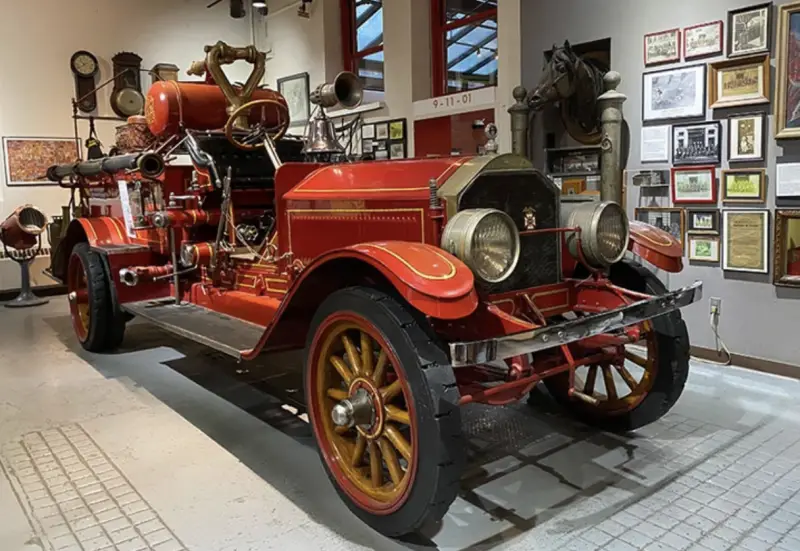
Engine Co. 246. Manufactured by American La France, “Type 75” 700 GPM motorized pumpers were the principal rigs to replace FDNY’s horse-drawn pumpers. Image courtesy New York City Fire Museum.
Have you ever stopped to look at fire engines as they race down the street? There’s something mesmerizing about the juxtaposition between the sleek, brightly colored machines and their stark life-saving mission. Viewers have a chance to examine in depth the role that these critical machines have played at the New York City Fire Museum in Manhattan.
Now housed in the building that was home to Engine Company No. 30, the New York City Fire Museum opened to the public in the Beaux-Arts building on Spring Street in 1987.
The museum traces the history of firefighting from the bucket brigades of New Amsterdam to modern firefighting techniques. A special tribute is paid to the firefighters who lost their lives on 9/11; artifacts recovered from the World Trade Center site are included in the exhibit. While this section is particularly moving, visitors shouldn’t overlook the historical focus on the evolution of firefighting.
Exhibits include “Firefighting on Parade,” which highlights four apparatuses in parade formation as well as a Steinway hose carriage. Artifacts including a Brooklyn volunteer fire department banner, belts, hats, helmets, and more. Paintings and illustrations demonstrate the role volunteer firefighters played, showing them both socializing and at work in “The Romance of Firefighting.” And fire equipment buffs will be able to dig deep into the transition from steam to motorized equipment in “The Evolution of Fire Apparatus.”
The museum also hosts tours about fire safety education for kids, including a mock apartment with artificial smoke and safety hazards, as well as a discussion about fire hazards. The tour concludes with a visit to the exhibit “The Evolution of Firefighting,” given by a retired New York City firefighter.
The museum is great for fire-equipment buffs as well as people who want a unique perspective on New York City history. Tip: Don’t miss the chance to hear stories from a retired FDNY firefighter. There’s no better way to connect with history than with stories from someone who has first-hand experience.
278 Spring St., nycfiremuseum.org
Museum of Street Art
New York’s array of museums is truly spectacular. From floors of natural history to displays of modern art, the history of the movies to galleries of incredible design, it’s all here.
And that includes a museum tucked into a hotel.
MoSA (the Museum of Street Art) actually starts outside the Citizen M hotel on the Bowery, with Rebirth by Meres One, a mural of layered and deconstructed letters. The letters in the 5,000-square-foot piece were pulled from the 5 Pointz landmark, a mural space in Queens. It was named for the five boroughs of New York joining together. The exterior of the building there was completely covered in murals curated by artist Meres (Jeff Cohen); it was abruptly whitewashed by the developed in 2103, as part of his plan to demolish the building.
Fun fact: the letters can also be seen on the MoSA water bottle.
Once you’ve entered the building, you can see additional graffiti art at the bar 21 floors up. The rest of the art can be seen on your journey downstairs—at various points in the stairwell; Meres worked with 20 streets artists whose work had appeared at 5 Pointz.
The museum’s location at Citizen M seems like the perfect match—with its pops of color and downtown vibe, the graffiti art fits right in.
Hint: while you’re downtown, take yourself on a tour of the 100 Gates Project, in which artists are connected with merchants to paint murals on their roll-down security gates. The area teems with fascinating street art, in fact—such as the Bowery Mural. Keith Haring famously created a mural on this spot in 1982; since then, several artists have had their work featured on the wall, including Kenny Scharf and Aiko Nakagawa.
Art is truly everywhere in New York; you just need to keep your eyes open.
Citizen M Hotel, 189 Bowery, 212-372-7274, citizen.com
Holographic Studios
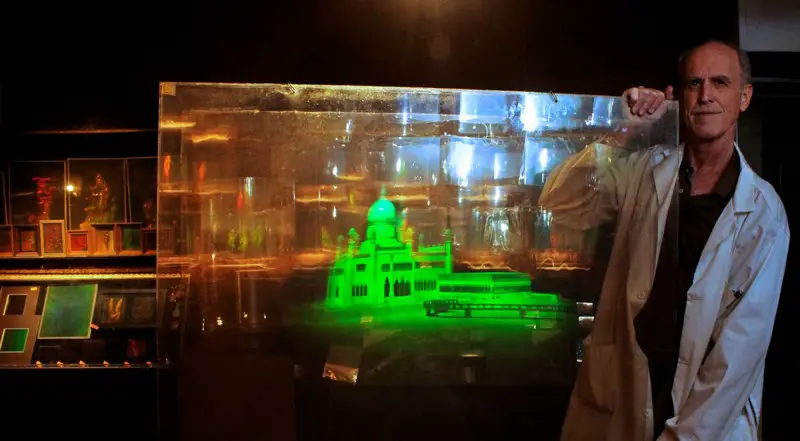
Part museum, part science lab, and part only-in-New-York, the Holographic Studios offers a fascinating look into the weird and wonderful art and science of holography, a method of generating three-dimensional images.
The world’s oldest gallery of holography offers everything from tours to custom-made holograms to tiny holographic images you can purchase; it’s all nestled in a former blacksmith’s studio. The overall space is small, but packed with so much stuff you’ll easily be able to spend a good part of your afternoon there. (If you’re lucky, your guide will tell you some of the history of the space; simply being in this incredible hidden-away studio is a big part of the overall experience. Make sure to book a tour ahead of time.)
While you’re there, you’ll also see holographic sculptures that look incredibly real; cylindrical holograms with moving images that can be seen from all sides; and holographic art. If you’re offered the chance to reach out and try to touch the hologram in front of you, by all means do it. Some of them look so incredibly lifelike that you’ll be amazed they’re not actually solid and real.
Upstairs you’ll find a small gallery that features examples of holography; downstairs you’ll enter the underground laser laboratory; you’ll feel like you’re entering a mad scientist’s lair, in the best possible way. Spend some time upstairs first, though, where you’ll see celebrity portraits, including those of Andy Warhol, Isaac Asimov, Bill Clinton, and Phyllis Diller.
Once you’re downstairs, you’ll find yourself in what looks like someone’s incredibly cool home lab; here’s where you’ll get to see how holographs are made.
The studio also offers classes and custom-made holograms. And you’ve probably gathered this already, but this is a fabulous place to take kids.
A former blacksmith’s studio where art and science mesh to create 3-D images, tucked away in Manhattan? This is New York.
240 E. 26th St., 212-686-9397, holographer.com
Skyscraper Museum
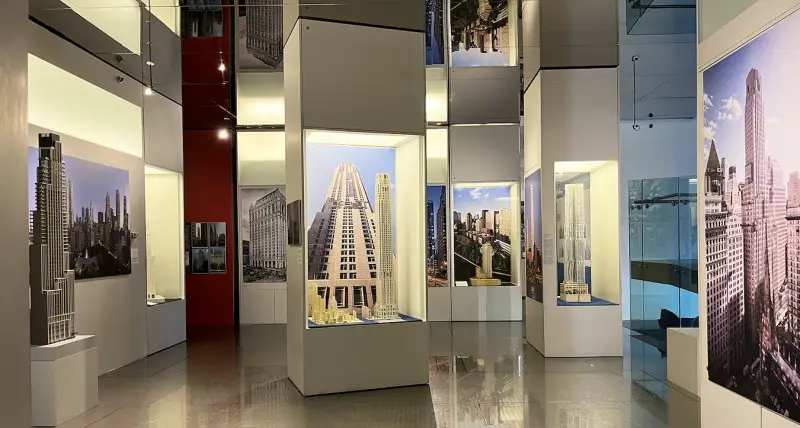
New York is known for its skyline and towering skyscrapers. So it’s only fitting that the city should have its own Skyscraper Museum.
Celebrating the city’s architectural legacy and the forces that shaped the progression of its various skylines, the museum examines New York’s buildings in all their incarnations: monuments of design; places of work and living; even as real estate investments and sites of construction.
Visitors can explore the city through such exhibits as Residential Rising: Lower Manhattan Since 9/11, which examines the growth of skyscrapers since 9/11, especially at the southern tip of the island. The exhibit looks at such phenomena as “starchitects”—internationally renowned architects who contributed to the new developments; as well as the new growth in the first decade after the attacks.
Don’t miss the permanent exhibit: it features a 36 ft.-long mural depicting the evolution of the skyscraper, from the pyramids to the present. Along the way, visitors can ponder such questions as: why do we want to build such tall buildings? And how did technological and engineering feats support that interest? A fun addition is the section that shows all the buildings that at one time held the title “world’s tallest building.”
The museum also hosts a full roster of programs, including some great ones for families, focusing on such topics as engineering and urbanism, demonstrated through hands-on activities.
And note that the museum itself is located not far from some of the city’s newest skyscrapers—so take advantage to see in person what the museum features—living history in the form of a constantly changing skyline is, after all, the inspiration for what you see on those museum walls.
39 Battery Pl., skyscraper.org
Mount Vernon Hotel Museum & Garden
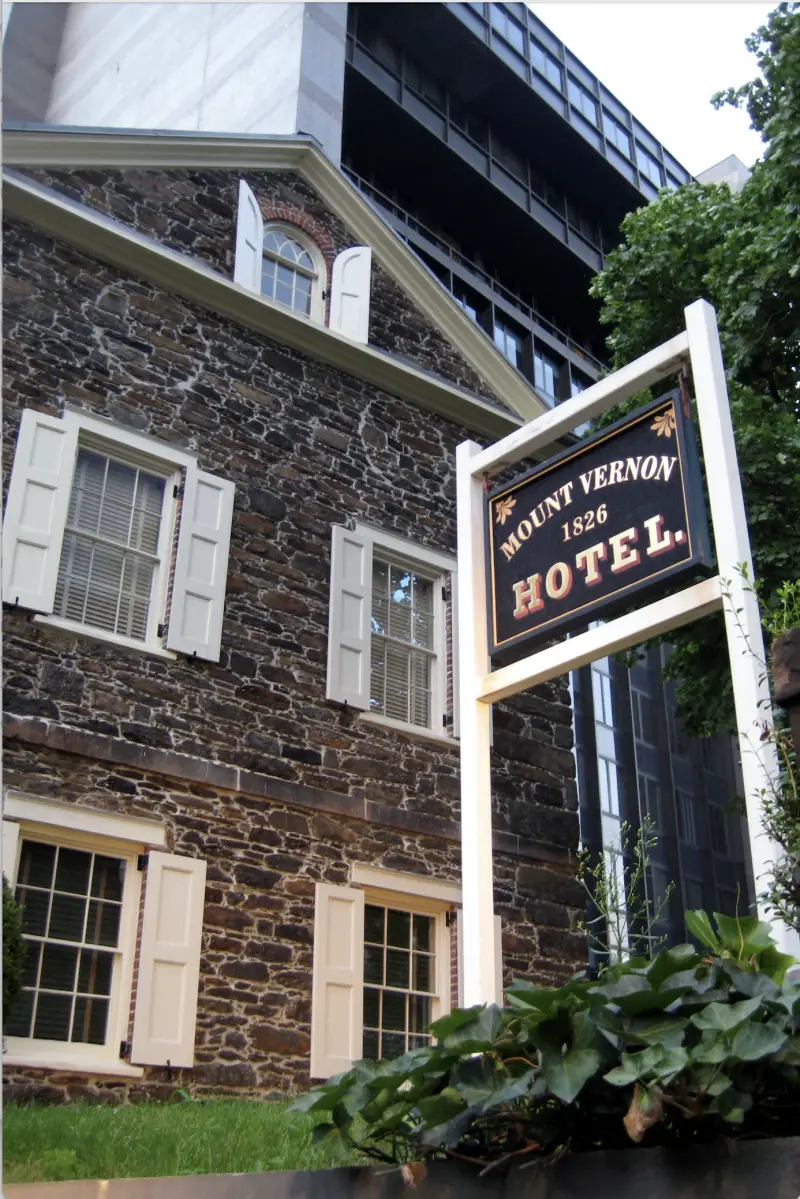
Wally Gobetz/Flickr
Turn a corner in New York and it’s more than likely that you’ll feel like you’ve stepped back in time. In a city where the old literally bumps up against the new, discovering the past that co-exists with the present is one of the Big Apple’s many delights.
One of the venues where the past best comes alive is the Mount Vernon Hotel Museum & Garden on Manhattan’s Upper East Side.
Constructed as a carriage house in 1799, the structure was converted to a hotel in 1826. The land on which it stands was originally owned by Colonel William Stephens Smith and his wife, Abigail Adams Smith, daughter of John Adams.
The hotel, believe it or not, was billed as a “country resort,” since the city essentially stopped at 14th Street. To venture to the hotel, you would take a stagecoach or steamboat to 61st Street, and then while away the afternoon genteely sipping lemonade (the ladies) or playing cards (the gentlemen) and escaping the faster pace of city life. It was one of more than 50 day hotels in the city at that time.
The house went through several different permutations, eventually being purchased in 1924 by The Colonial Dames of America, a group committed to historic preservation and education.
Today, the building preserves and shares information about the only historic day hotel left in Manhattan; it’s also one of the few pre-1800 buildings still standing in Manhattan. Visitors can take a tour through the eight fully furnished period rooms as well as the lovely garden. The tours can focus on different aspects of the building, from decorative arts to social history. It’s both startling and strangely comforting to come upon the building in a bustling city neighborhood.
And you can even recreate what it must have been like to take your leisure in the parlor in days of yore: for a small fee, tea and scones can be added on to the end of any tour.
421 E. 61st St., 212-838-6878, mvhm.org
National Museum of Mathematics
Do you remember doing math in school? Numbers and formulas on the page, often seeming to represent nothing more than…numbers and formulas on a page.
But the National Museum of Mathematics’ may well change your perception of math.
The role of the museum, in fact, is to bring math alive—literally, as it demonstrates ways that math is, in fact all around us. The exhibits are interactive and experiential; Coaster Rollers, for example, lets visitors roll over a pit of “acorns”—but the ride is smooth thanks to their constant diameter.
Patterns take center stage in several exhibits, including “Pattern Mesh,” which demonstrates how rolling one pattern over another creates new designs (think high-tech kaleidoscope); and “Pattern Pants,” which uses computer technology so visitors can “dress” themselves in symmetrical patterns.
Want to make your free throw more accurate? “Hoop Curves” shows how statistics, and a robotic basketball shooter, can help. And formulas leap from the page to the screen to create three-dimensional surfaces in “Formula Morph.”
Everywhere you look in the museum, you’ll see things to ride, draw, program, build, design and create. Build a cool structure in The Structure Studio; fit shapes together on different curved surfaces to observe the differences (“Shapes of Space”); observe wave phenomena and algorithms on “Dynamic Wall,” a moving computer-controlled wall. (Note: Plenty of adults partake in the fun; in fact, you’ll see people of all ages deeply absorbed in the exhibits. It’s not just for kids.) It’s a terrific way to make math meaningful and alive, and to illustrate its dominance all around us.
And everywhere you look, you’ll also see math in motion, showcasing its importance in the world around us—a world, in fact, that wouldn’t exist without math.
11 E. 26th St., 212-542-0566, momath.org
The Museum of Jewish Heritage–A Living Memorial to the Holocaust
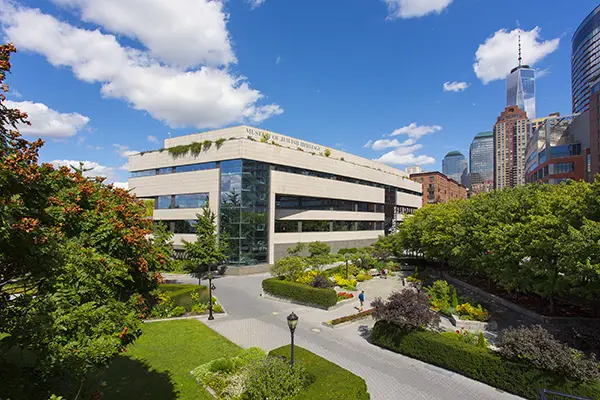
The Museum of Jewish Heritage–A Living Memorial to the Holocaust is New York’s contribution to the global responsibility to never forget. The third largest Holocaust museum in the world, the museum anchors the southernmost tip of Manhattan and completes the cultural and educational landscape it shares with the Statue of Liberty and Ellis Island. 36 Battery Pl., mjhnyc.org
The Museum at FIT
Billing itself as “the most fashionable museum in New York City,” the Museum at FIT has more than 50,000 pieces of clothing and accessories dating from the 18th century to the present in its permanent collection; the museum focuses especially on current avant-garde looks. One of the few museums to focus exclusively on fashion, The Museum at FIT was founded in 1969 and moved to its current location on West 27th Street in 1974. The museum is known particularly for its special exhibitions, which have included Gothic: Dark Glamour, the first exhibit dedicated to the gothic style of dress (2009) and the more recent Dior + Balenciaga: The Kings of Couture and Their Legacies (it closed this past fall), which examined two of the world’s most influential couturiers.
The museum itself encompasses three galleries: the lower level, dedicated to special exhibitions; The Fashion and Textile History Gallery, which offers rotating exhibits (it changes every six months) from the museum’s permanent collection; and Gallery FIT, which showcases student and faculty exhibitions.
Whether you have a passion for fashion or are more interested in the role fashion has played—and continues to play—in the cultural landscape, the Museum at FIT offers a way to enjoy and experience both.
227 W. 27th St., fitnyc.ed
Poster House
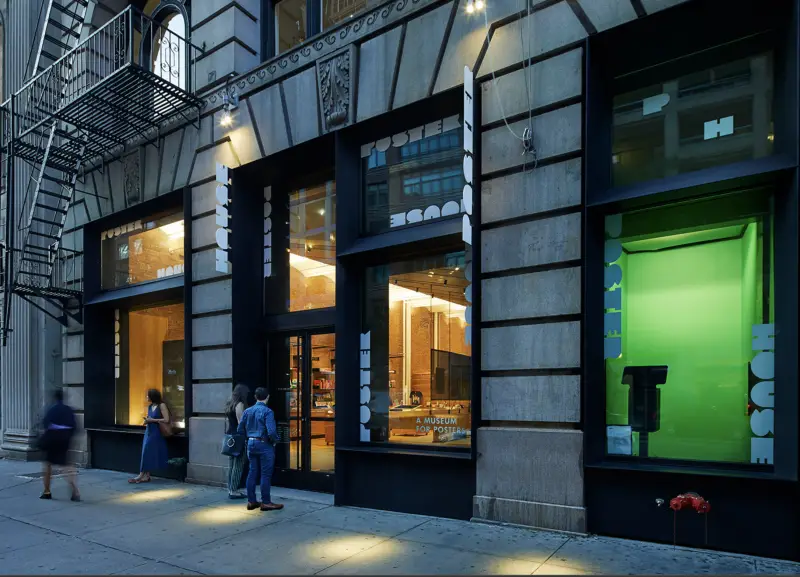
Whether you grew up in the suburbs or a city, liked soft rock or heavy metal, wanted to be a teacher or an artist, you probably had a poster on your wall. Therein lies the appeal of Poster House: pretty much everybody, at one time or another, has owned a poster.
The first poster museum in the United States, Poster House explores the impact that posters have had on society and culture, examining them as both historical documents and graphic communication. Used in just about every corner of society, from advertising to public awareness, posters also impact just about everyone at every age.
The museum opened in 2019, looking to fill a niche in accessible design. They now have a permanent collection, rotating special exhibitions, and ongoing events, from lectures to hands-on workshops for kids.
Poster House offers the opportunity to explore the use of posters in the context of a museum setting and in juxtaposition to other posters. It offers audiences the chance to explore how vast the impact of this medium has been—and continues to be.
And if you still feel that a wall isn’t complete without a poster hanging on it, never fear: the shop offers a wide range of products—including, of course, posters.
119 W. 23rd St., posterhouse.org
Brooklyn Children’s Museum
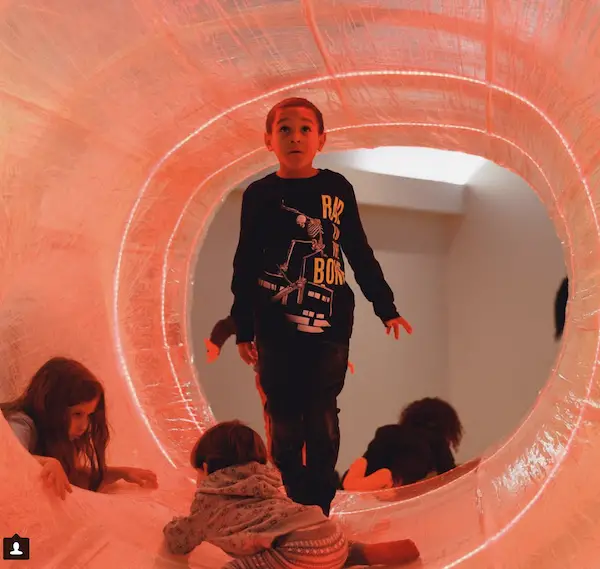
TapeScape at the Brooklyn Children's Museum/Instagram
Did you know that the Brooklyn Children’s Museum was the world’s first children’s museum? Not the city’s or the country’s—the world’s; it’s New York’s largest cultural institution just for families.
The museum’s focus ranges from natural science to world cultures, with a strong emphasis on interactivity, as well as on Brooklyn itself. Some of what you should check out: The youngest visitors (Infants-age 6) can indulge in “Totally Tots,” which encompasses nine sensory play area, including sand, water, music, dress-up, and blocks. “Neighborhood Nature” uses the community cork garden, as well as the museum’s own diorama habitats and other parts of the collections.
One of the most fun and innovative areas is “World Brooklyn,” where kids can play in scaled-down shops based on real ones found in neighborhoods across Brooklyn. In addition to “shopping,” kids can pretend to be bakers, grocers, designers, and more, giving them a sense of the different roles found in a community.
Not to be Missed: The Nest, an outdoor installation located on the museum’s rooftop space. The interactive playscape (kids--and adults—can climb and explore the installation) was inspired by Baya Weaver birds’ nests (You can find actual examples in the museum’s collection.) The Nest is made from reclaimed NYC water tower cedar that includes an exterior to climb on as well as a hammock area and open space.
One of our favorites isn’t strictly an exhibit: It’s the People Tube, designed to take families to the lower level. But with its dazzling neon lights, it’s also the tunnel on a spaceship, the walkway of a castle in the sky, an escape hatch from a villain’s lair. (Actual interpretations from actual children.)
The museum also offers a wide range of programs for families, from holiday celebrations to hands-on activities.
At the Brooklyn Children’s Museum, nothing is hands-off, which means “don’t touch” is not in the vocabulary here—but using your imagination definitely is.
145 Brooklyn Ave., 718-735-4400, brooklynkids.org
The Climate Museum
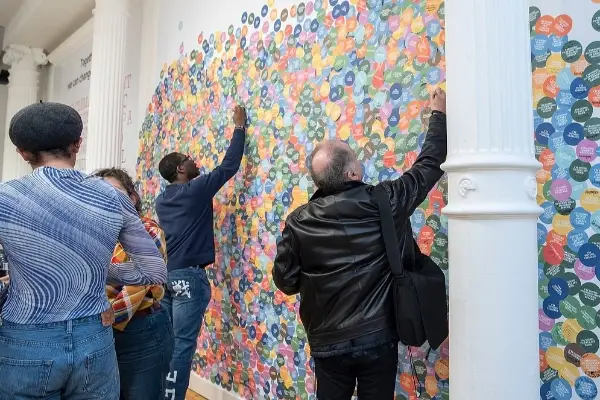
Photo: Sari Goodfriend.
The Climate Museum is the first museum in the U.S. dedicated to climate change, mobilizing the power of arts and cultural programming to invite visitors into climate engagement. The latest exhibition here is The End of Fossil Fuel. The show explores the roots of the current crisis while also sharing the stories of victories by climate justice communities. A 45-foot mural by award-winning artist R. Gregory Christie envisions a just future. There's also a sticker wall, where visitors can commit to action. The exhibition and its related programming are all free. Extended through April 26th. Wed.-Sun., 1-6pm.
105 Wooster St., 917-551-6670, climatemuseum.org
Carnegie Hall Rose Museum
According to the classic adage, the answer to “How do you get to Carnegie Hall?” is “practice.” Luckily, the way to the Rose Museum, located inside Carnegie Hall, is much simpler—just enter on 57th Street.
Opened in 1991, the museum, which offers 2,500 feet of archives, details Carnegie Hall’s incredible history. Located on the second floor, The Rose Museum offers access to Carnegie Hall’s extraordinary archives; these include concert programs, musical manuscripts, videos, autographed posters, musical quotes, and photographs. Among its holdings are more than a century of concert programs, as well as information about the preservation campaign that followed the development of Lincoln Center in the 1950s, the sale of the Hall in those years, and the subsequent campaign to save and preserve it. In 1960 the government bought the Hall; it was declared a National Historic Landmark in 1962.
The museum’s collection runs the gamut from objects worn by performers to ephemera. Among its holdings: a ring owned by Beethoven, an autographed program from the Beatles’ landmark 1964 concert at the Hall, one of Benny Goodman’s clarinets, a notebook owned by Richard Strauss, and a sequined jacket owned and worn by Judy Garland. Also notable (if not musical): the trowel used in laying the cornerstone of Carnegie Hall in 1890.
The museum also offers rotating exhibits, which have focused on such musical luminaries as Marian Anderson, the first African American to sing at the Metropolitan Opera, conductor and composer Leonard Bernstein, and George and Ira Gershwin—the latter honoring the centennial of George Gershwin’s birth.
Almost as enjoyable as the collection is the sense of being privy to a hidden world, a behind-the scenes experience, enhanced by the fact that the museum is actually in Carnegie Hall itself; the connection between the materials and the Hall becomes tangible—you’re seeing the program of a group that actually appeared in the building in which you’re standing.
The museum provides a way to experience Carnegie Hall in a new way—all practicing aside.
154 W. 57th St., 973-622-4704, carnegiehall.org
Dyckman Farmhouse Museum
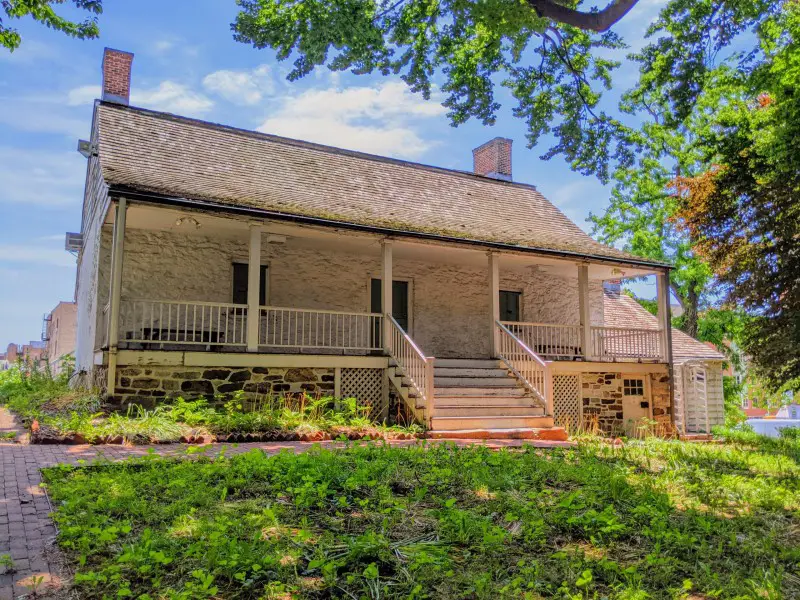
Image courtesy Dyckman Farmhouse Museum.
The juxtaposition of old and new is one of the most fascinating aspects of New York, the new construction and the old brownstones; the gleaming new buildings and the evocative old monuments. At the corner of 204th Street and Broadway sits just such a part of the city’s history: The Dyckman Farmhouse. (Passing it on a bus or in a car is always a surreal experience, as you think you’ve been temporarily transported back in time.)
Built on the site around 1784, the Dutch Colonial Farmhouse was home to the Dyckman family for almost a century. Opened to the public in 1916, it now includes a half-acre park for the public to enjoy.
Members of the family bought the property in 1915 to protect it against encroaching development. A major restoration project was undertaken to restore the house to its earliest appearance, with objects that both belonged to the family as well as those that were given by others. (The rooms may present a slightly romanticized version of what a working farmhouse might have contained, but there’s no doubt it’s still fascinating.)
The house now includes the surrounding half-acre (the original acreage of the farm was much larger). And don’t miss what’s within the grounds: visitors can find a small reproduction smokehouse and a Hessian Hut—during the 1900s, the remains of more than 60 huts used as shelter by British and Hessian soldiers during the Revolution were found. Also uncovered: the chimney, walls, and floor of a hut, which were reconstructed as a full hut.
Perhaps the best thing about the house is its very presence: it’s a living reminder of the city’s past, and how the old and the new interact—and co-exist.
4881 Broadway, W. 204th St., 212-304-9422, dyckmanfarmhouse.org
Spyscape
If you’ve ever wanted to be a spy (and let’s face it, who hasn’t?), this one’s for you: Spyscape offers a mix of cool interactive experiences and background info on the real world of spies.
Try your hand (or, more accurately, your feet) at escaping a crisscrossed network of light beams. Test your detecting skills in the new Batman experience—with some help from other iconic DC characters. Will the evil empire take over? Not with your skill and derring do.
Visitors can also learn about encryption by discovering the real cryptologists who helped crack the German Enigma Machine (a kind of cipher) during World War II. Don’t miss the actual code books and code-breaking devices.
In “Deception,” you’ll encounter the FBI agent who sold secrets to the Russians for more than 20 years, and encounter state-of-the-art lie-detection machines.

Other areas include “Surveillance,” which shows how corporations and governments use data surveillance (extremely sobering, to say the least) and information on how female journalists were able to free 2,000 slaves using their spy know-how.
Don’t miss “Hacking,” which explains a teen was able to break into the CIA; or “Cyber -Warfare,” which examines such real-world issues as Phishing.
And if you’ve ever pictured yourself accompanying James Bond on one of his missions—or just enjoy the movies—“Special Ops” introduces you to the original Q, who inspired the suave spy.
Don’t bypass the interactive experiences, especially if you have kids with you: the challenges were designed by a former Head of Training at MI6.
And if you’re looking for bragging rights about how well you did—as you should—make sure to get your profile after you complete all the challenges, which put your skills to the test.
Because who knows? One day that talent for code breaking may come in handy. Don’t you want to be ready?
928 Eighth Ave., spyscape.com
The Museum of Broadway
Photo: Monique Carboni.
The interactive, experiential Museum of Broadway near Times Square leads guests on a journey through a visual history of Broadway, highlighting groundbreaking moments by showcasing spectacular costumes, props, renderings, rare photos, videos, and more. Along the way, visitors get the stories of some of the pivotal shows that transformed the landscape of Broadway. Exhibits and immersive experiences feature The Phantom of the Opera, The Lion King, HAIR, The Ziegfeld Follies, Show Boat, Oklahoma!, The Wiz, and Rent, among many more. Overall, the museum highlights more than 500 individual productions from the 1700s through the present. 145 W. 45th St., themuseumofbroadway.com
Jackie Robinson Museum
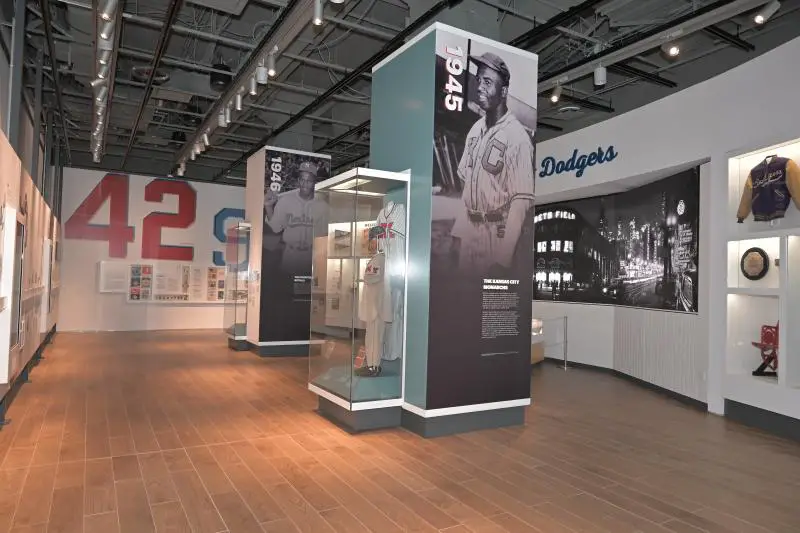
The Jackie Robinson Museum (JRM is more than a museum about a baseball star. Yes, it focuses on Robinson’s incredible achievements in helping to bring an end to racial segregation in professional baseball, and to his incredible achievements on the field, becoming the first Black athlete to join Major League Baseball.
But it’s also about how the impact of one person can lead others to examine and strive to change pressing social concerns. The museum looks at Robinson’s life and achievements against the backdrop of history in this country.
The main gallery considers Robinson’s life and legacy, starting with his birth in 1919 and using videos, artifacts, and interactive experiences to demonstrate both his prowess as an athlete as well as his commitment to social change through activism and civil engagement.
Don’t miss the Story Towers, which use artifacts to highlight different parts of his life, as well as the case that displays player contracts, letters, and photographs that tie into his role with the Brooklyn Dodgers and manager Brach Rickey.
Especially poignant is "Crossing the Color Line,” a media installation that captures the racial environment beyond the baseball field.
And fans will especially enjoy ”The Dugout,” featuring the first Rookie of the Year Plaque ever awarded, as well as actual fan letters to Robinson. Robinson’s legacy can be seen as well in the display on his impact on popular culture, featuring comic books, magazine covers, movie posters, and more, from 1947 to today.
The museum also offers lectures, public and school programs, and more ways in which to engage the public.
One Hudson Square Building; 75 Varick St., 866-454-3772, jackierobinsonmuseum.org
MoMA PS1
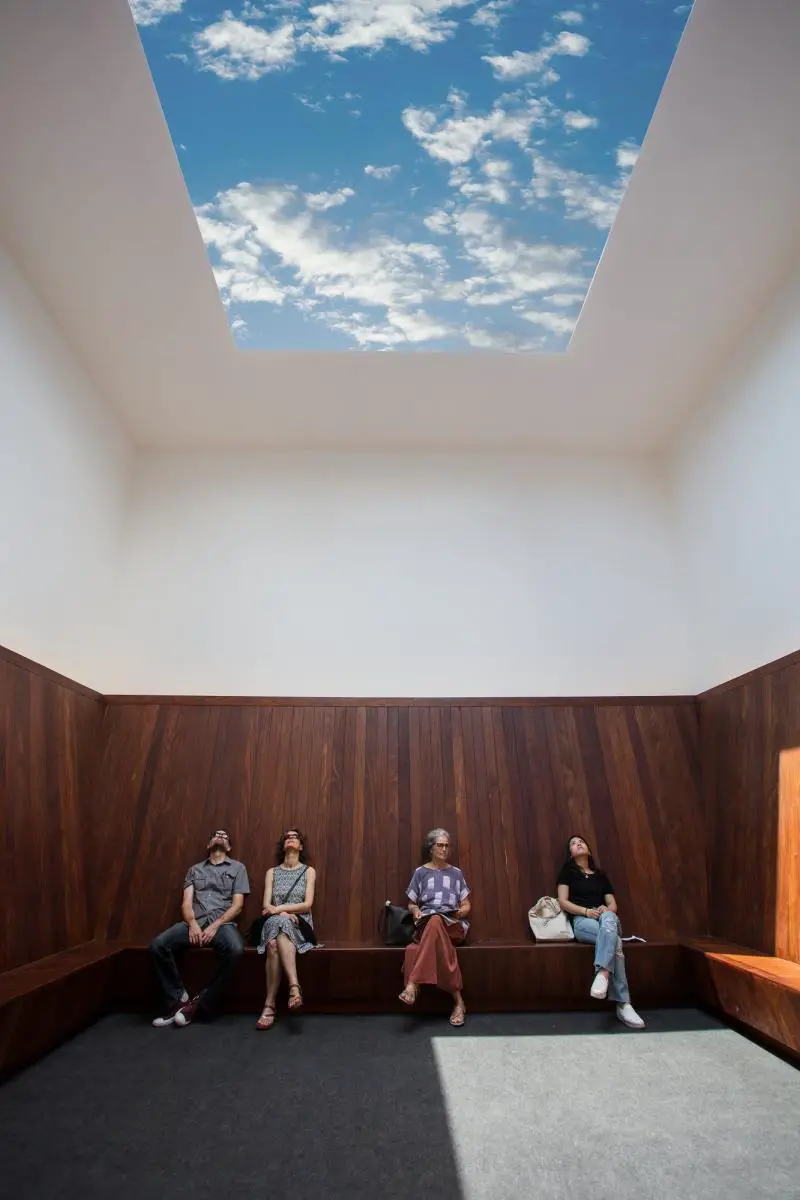
MoMA PS1 long-term installation Meeting by James Turrell. 1980–86/2016. Light and space. The Museum of Modern Art, New York. Gift of Mark and Lauren Booth in honor of the 40th anniversary of MoMA PS1. Photo: Pablo Enriquez.
MoMA PS1, the “younger sibling” of MoMA (the Museum of Modern Art), offers a deep dive into the ways creativity can inspire and enable artists. Its focus is artist-centered, and offers audiences new ways to experience and engage with new works of art.
The museum also offers a strong roster of artist talks, screenings, workshops, and performances that complement the exhibits and expand on the goal of bringing to life artists’ visions.
22-25 Jackson Ave., Long Island City, momaps1.org
Society of Illustrators
Sporting such members as N.C. Wyeth, Rube Goldberg, and Norman Rockwell, The Society of Illustrators is the oldest non-profit organization in the United States focusing on the art of illustration.
It started with a straightforward motto in 1901: “The object of the Society shall be to promote generally the art of illustration and to hold exhibitions from time to time.” Illustration as a medium was in its heyday then, and attendees at the monthly dinners included such luminaries as Frederic Remington and Howard Chandler Christy, as well as special guests like Mark Twain and Andrew Carnegie. During the First Word War, Charles Dana Gibson, the society’s president, was asked to bring together a group of artists who could create posters in support of the war. Eight members were commissioned by the army and sent to France to sketch their impressions of the war, creating some enduring images. Society members also contributed to the war effort during the Second World War, not only creating poster campaigns, but also visiting veterans’ hospitals to sketch the wounded soldiers.
The Museum of Illustration was founded in 1981; it includes 2,500 pieces in the permanent collection that are both displayed and made available for scholarly research.
The MOCCA Gallery offers exhibits of comic and cartoon art. The Society also offers Sketch Nights, lectures, and even Happy Hours. It’s a true New York hidden gem—with some incredible masterpieces right in plain sight.
128 E. 63rd St., 212-838-2560, societyillustrators.org
The New York Botanical Garden
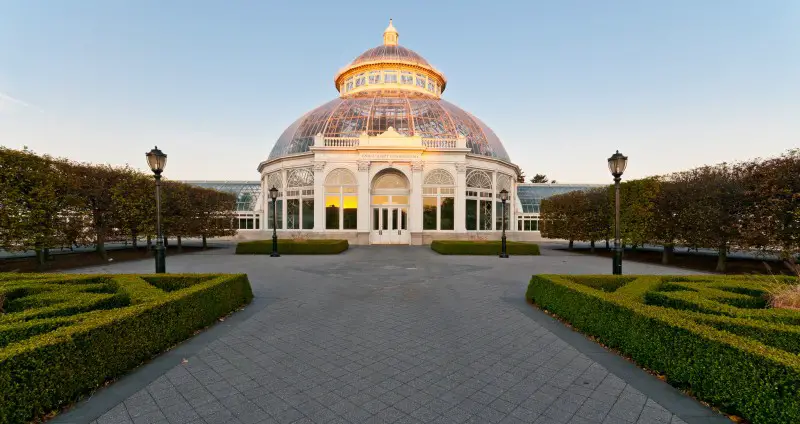
George Bremer/Flickr
While the New York Botanical Garden is a treasure trove of plants, gardens, and seasonal blooms, it’s also home to a series of small exhibits held throughout the year.
Current offerings? Things to Be Remembered: Living Art Project juxtaposes visitors’ sketches and notes of their experience at the Garden with remains of extinct plants to remind us of what we have lost—and what should be remembered. Vanishing Art: A Living Gallery offers pop-ups that range from chalk art to improvisation. And African American Garden: The Caribbean Experience features eight different beds of plants with names such as “Transformation,” “Resilience,” and “Roots,” all in service of exploring the plants that served as the basis for food, medicine, musical instruments, and even weavings in the Caribbean. At this exhibit, you can have your garden and eat it, too, with a stop at the Hudson Garden Grill, now serving up a Caribbean menu inspired by the exhibit, with specialties like jerk chicken and pineapple skewers, as well as sweet potato pudding and coconut custard.
All this, of course, on top of the gardens themselves. Wander through the lush, seasonal Perennial Garden; enjoy the “Ladies” Border,” first planted in the 1930s and featuring plants not normally found in New York State, such as Peruvian lilies and Japanese apricots. And the 3.5-acre Native Plant Garden will transport you to a thriving field with nearly 10,000 native shrubs, wildflowers, ferns, and grasses that attract birds and butterflies.
Who says you can’t combine a day outside enjoying nature with a museum visit?
718-817-8700, 2900 Southern Blvd., the Bronx, nybg.org
Museum of Illusions
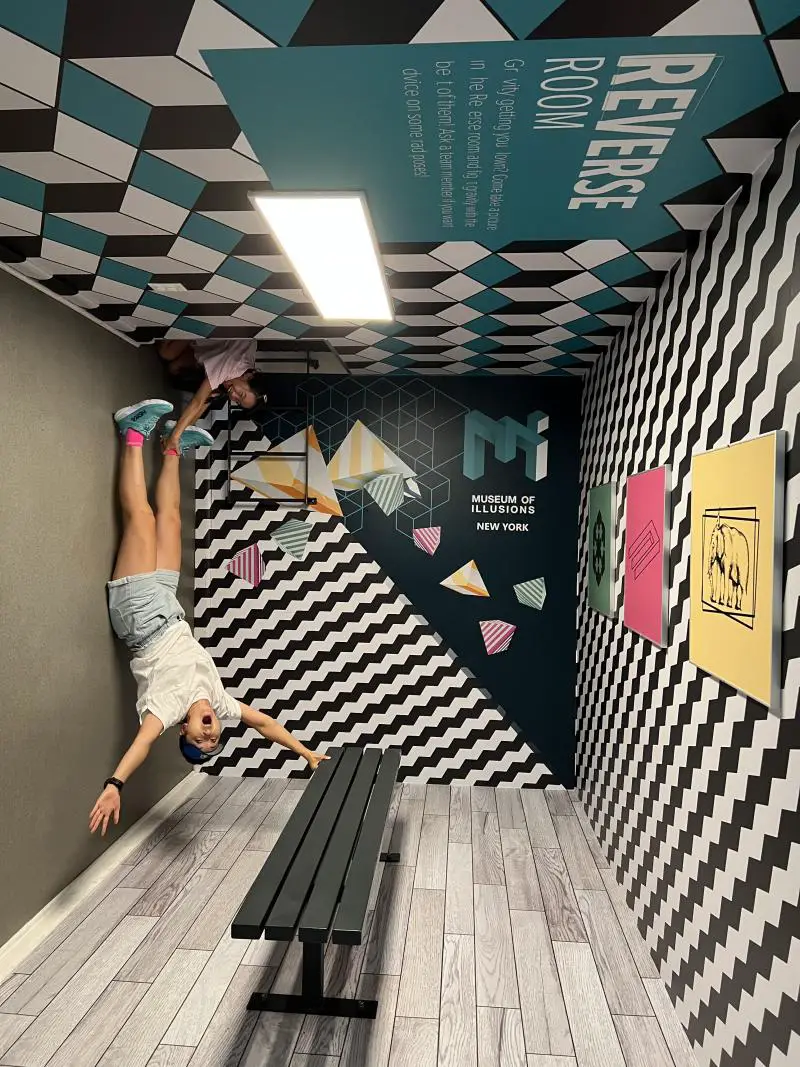
You won’t believe your eyes—at least, you probably shouldn’t—at the Museum of Illusions, where nothing is as it seems.
In the Illusion Rooms, for instance, stroll through an upside-down world; enter a room that’s tilted…or is it? And grow and shrink your body (or are you…?) Plus an anti-gravity room and an Infinity Room, where a series of infinite projections are created by a set of mirrors that work together to create a group of never-ending images.
The more-than-70 exhibits include installations that let you switch noses with a friend (not permanently); chill with your clones; and have your head served on a platter (or is it...). You’ll also find a version of the famous Beuchet chair illusion—you’ll see how someone’s perceived size depends hugely on the surrounding objects.
You can also learn about perception and vision as you gaze at weird images and learn about how our brains trick us into seeing things that aren’t really there. And in the section on holograms, watch 3-D images appear and disappear, pop out of their frames, or change their theme. Patterns and colors, shapes, and motion trick the brain into seeing things that aren’t real—and that’s part of the fun. You know you’re not really upside down, walking on the ceiling in the Rotated Room…but part of your brain just isn’t 100 percent sure. You’ll learn how your brain can be tricked into seeing things that aren’t there, even when your eyes are sure they are.
The museum started in Croatia and now has 30 outposts around the world. It’s a great interactive experience for pretty much anyone. While you’re there, check out the Close-up Magic (check dates and times) and the games and puzzles room.
It’s interactive, wildly Instagrammable, and just plain fun.
Just don’t believe your eyes.
77 Eighth Ave., 212-645-3230, newyork.museumofillusions.us
The International Center of Photography
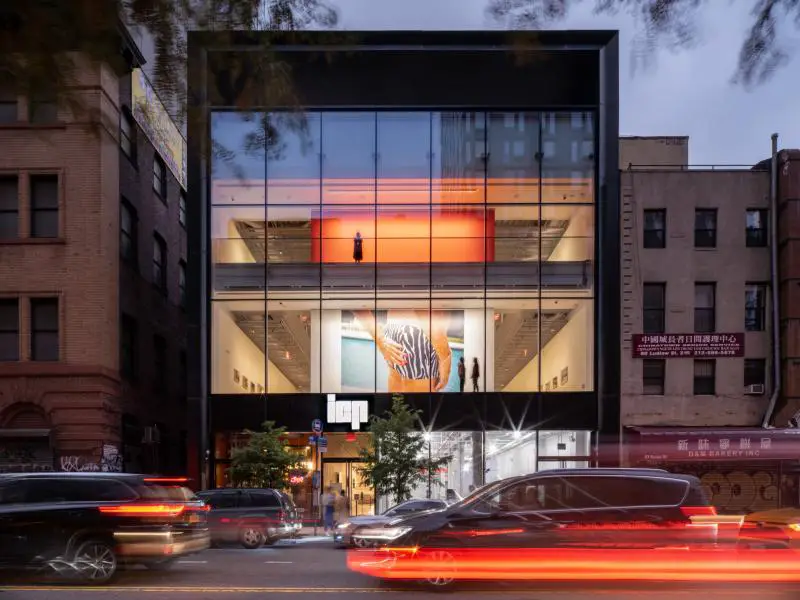
Photo by Alex Fradkin.
Founded in 1974 by famed photographer Cornell Capa, ICP's museum is considered the preeminent institution in this country dedicated to photography and visual culture. Capa’s original mission was to support “concerned photography”—images that would both educate and enact change. Exhibitions have included a visual history of hip-hop, images of the Lower East side, and documentary projects, as well as early daguerreotypes and multimedia installations. The museum’s permanent collection includes more than 200,000 prints and images. ICP is also known for its photography school, from a teen academy to classes for professional photographers, and its library, which contains more than 20,000 books, artist files, and periodicals, open the general public.
79 Essex St., icp.org
The Noguchi Museum
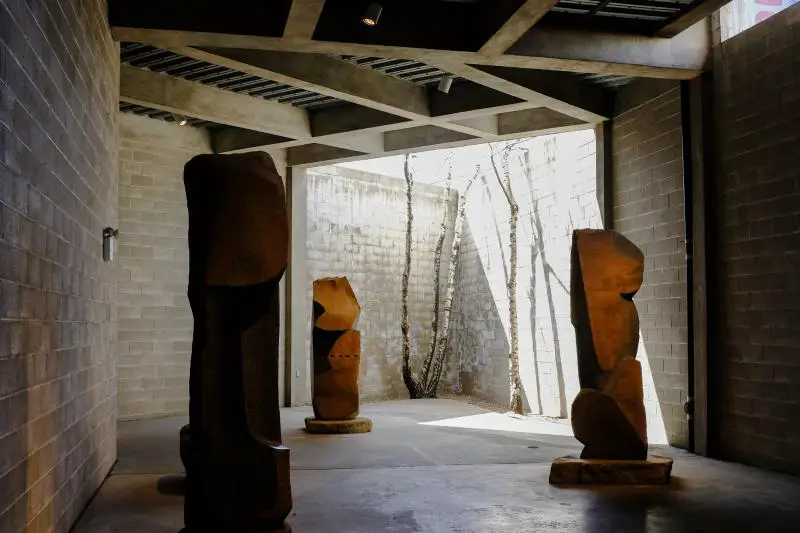
Billie Grace Ward/Flickr
Known for his large-scale works incorporating materials from bronze to stainless steel to marble, Isamu Noguchi is also recognized for being the first living artist to establish a museum that showcased his own work. While often known for his sculpture, the artist also created furniture, landscapes, and even set designs. His travels around the world introduced him to forms and materials from countries including Mexico and China, all of which he incorporated into his work. Unlike many artists, Noguchi has not been associated with one particular school or movement, which imbues his works with a sense of both freedom and mystery.
Housed in a repurposed 1920s industrial building across the street from what was the artist’s studio, The Noguchi Museum holds the largest collection of Noguchi’s works in the world. In keeping with the artist’s philosophy about art being experiential, one notable feature of the installations is that the works are often shown with no physical barriers—and no written interpretation. The goal? To allow visitors to create their own interpretation and connection with the art.
The permanent installations were installed by Noguchi himself; the museum also offers rotating temporary exhibits that explore various theme in the artist’s work. These exhibits often include not just sculpture, but also models, drawings, and even some of Noguchi’s personal possessions.
In nice weather, visitors shouldn’t miss the outdoor sculpture garden, both an oasis as well as a further opportunity to interact with the works of art. The garden, like the other installations, offers visitors the chance to both observe and interact, with the experience creating an added layer of richness to the visit.
9-01 33rd Rd., Queens, NY, noguchi.org
Museum of Ice Cream
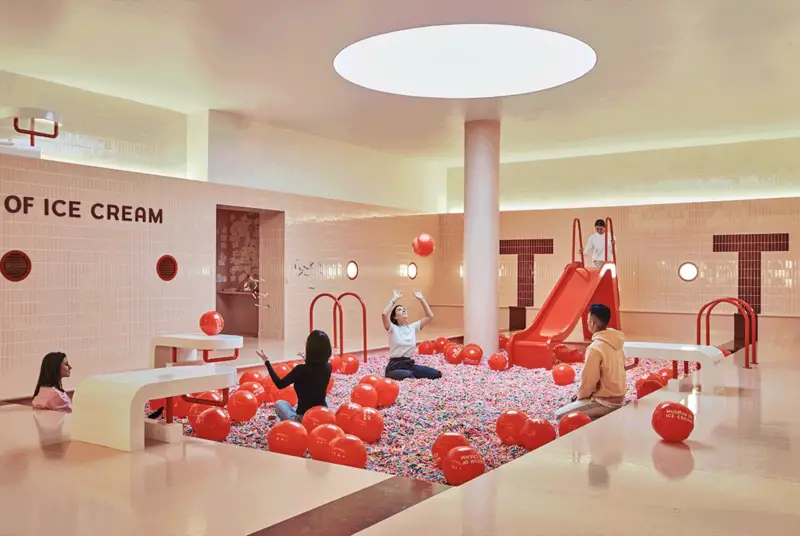
If you’re screaming for ice cream…but also have a hankering to visit a museum, fear not: The 20,000 square-foot Museum of Ice Cream is at your beck and call.
Designed as a multi-sensory play experience, the museum includes a three-story indoor slide into a cave of “melting” ice cream, a floating dessert spread, and their famous sprinkle pool, which you have undoubtably seen on Instagram. (The sprinkles are not real—they’re made of rubber—so do not attempt to eat them.)
You can also ride on a dreamy pink ice cream “subway,” and get creative in a room of magnetic letters. What else can visitors expect? Cone-hoop basketball, a scoop-inspired see-saw, and banana swings. Of course, there’s also ice cream to sample, in a variety of shapes, textures, colors, and tastes, including flavors such as Vegan Pink Coconut, Apple Pie Soft Serve, and Taro Milk Tea. Twelve installations also let visitors learn about the history of ice cream. And don’t forget to choose your “ice cream name.” Think celebrity when doing so—displays on a wall include examples such as “Sorbet-yonce,” and “Melon DeGeneres.” Add-ons include an opportunity to create your own edible slime, as well as themed cocktails for adults.
The museum has a bright, technicolor appeal that’s part Willy Wonka, part social media dream. It now has branches across the world, including in Singapore and China, as well as Chicago and Austin, Texas in the United States. It’s part of a new approach to entertainment meant to embrace one’s “inner child” and focus heavily on the colorful and experiential—the museum, in fact, offers what it calls “experium,” a combination of experience and museum, emphasis on the “exp.”
Whatever you call it, this kind of fun, interactive experience may not provide immersion into art, but it provides immersion of a different kind—into a technicolor diversion and, if you’re up to it, a pool full of sprinkles.
588 Broadway, museumoficecream.com
Albertine: Cultural Services of the French Embassy
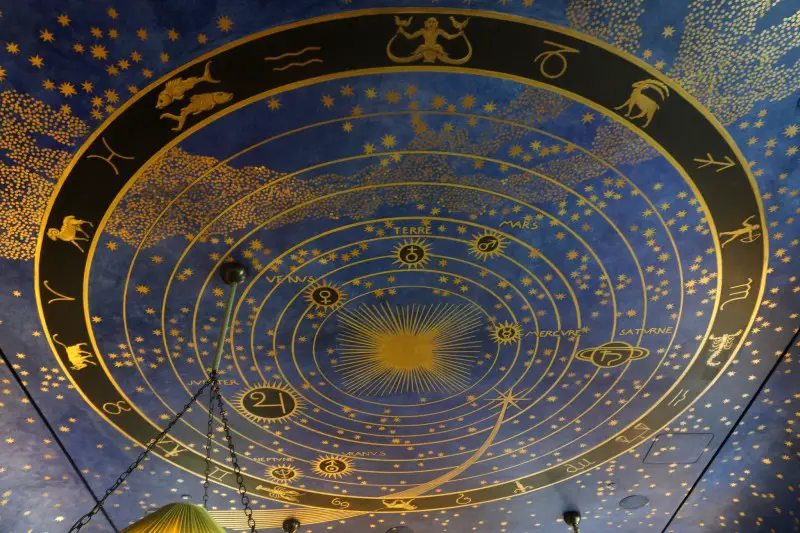
Zodiac ceiling at Albertine. Photo: Nick Normal/Flickr.
Part museum, part bookstore, part historical mansion, and all extraordinary, the ivy-strewn Payne Whitney mansion off 79th Street is an amazing resource, and one that many people overlook.
The Italian Renaissance-inspired building, now an official landmark, was commissioned as a wedding gift by Oliver Hazard Payne for his nephew, Payne Whitney. Architect Stanford White (whose many structures include the Washington Square Arch) designed and oversaw construction of the building between 1902 and 1906. (It initially had 40 rooms!)
The centerpiece of the building’s entrance greets you as you walk in—a replica of the statue Young Archer by Michelangelo. The original was actually in the lobby for many years—in 2009 it was attributed to the famous artist and loaned to the Metropolitan Museum, just a few blocks uptown. It’s the only Michelangelo statue in America, so when you’re done gazing at the many wonders in the building, wander a few blocks up to 81st Street and Fifth Avenue to see the original statue.
A number of other surprises await visitors—since 1952, the building has hosted the Cultural Services Division of the French Embassy; in 2014, the Albertine bookstore opened. The store is the only bookshop in New York dedicated solely to books in French and English. It boasts more than 14,000 titles—both contemporary and classic—from 30 French-speaking countries. Numerous programs, from films to lectures, are also offered.
But the building is also a museum of sorts. Glance up, and you’ll see the incredible deep-blue ceiling, filled with golden constellations, planets, and stars. It was inspired by the ceiling of the music room in the Villa Stuck in Munich, Germany. If the door to the lavish Venetian Room on the first floor is open, peek inside: the opulent interior served as a reception room, much favored by Whitney’s wife.
You’ll also see busts of renowned figures from both French and American culture, including Benjamin Franklin, Descartes, and Voltaire. Behind the children’s bookstore on the second floor, you’ll also find a display of rare books for sale, housed in glass cases.
As you’re taking in all the space has to offer, you may find yourself with a nagging feeling that you’ve seen it before—and it’s quite possible that you have. The interior has been used in films including Gone with the Wind and Rebecca, as well as in TV shows such as Law & Order and The Blacklist.
972 Fifth Ave., 332-228-2238, albertine.com
Old Stone House of Brooklyn
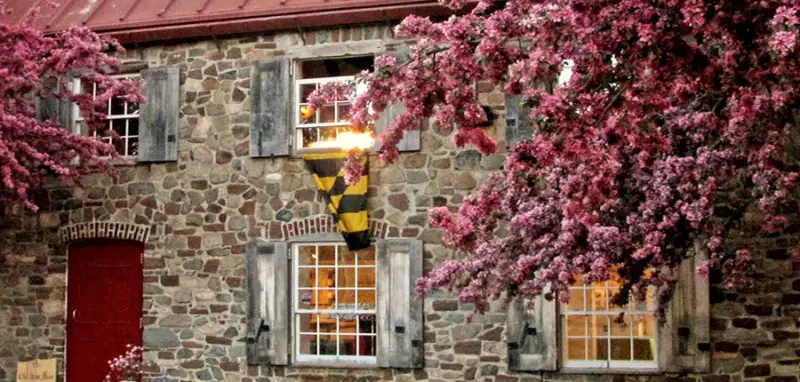
A reconstruction of the 1699 Vechte-Cortelyou House, which was destroyed by fire in 1897, the Old Stone House in Brooklyn marks the spot where the original Dutch farmstead was located—as well as the birthplace of the Brooklyn Dodgers. (The reconstruction used stones taken from the building site and incorporated Dutch elements such as iron numbers in the eaves that reference the year the year the house was originally built, 1699.) Today it’s listed on the National Register of Historic Places and serves as the conservancy organization for the park.
Note the Maryland flag that flies to commemorate the attacks the Maryland troops made on more than 2,000 British troops during the Revolutionary War. The site includes a permanent exhibition that explores, among other topics, the Lenape, Dutch colonization, and the Battle of Brooklyn—the first military engagement following the adoption of the Declaration of Independence in 1776. The museum also hosts a robust array of special exhibits, including, most recently, one on contemporary textiles.
The Old Stone House also serves as a community organization, offering readings, performances, concerts, and gardening and environmental workshops. Warmer weather brings a farmer’s market and CSA (community-supported Agriculture program, as well as the use of its outdoor garden space.
Situated at the center of Washington Park/JJ Byrne Playground in Park Slope, the site is also committed to developing and supporting programming that enhances the site.
And what about those Brooklyn Dodgers? The Old Stone House was the original clubhouse of the team (the team had numerous names, including Superbas—yes, really) that would become the Brooklyn Dodgers. The Old Stone House sits on the site of the original Washington Park, and across the street from the second Washington Park; they’re two of the oldest professional baseball stadiums in New York. Fun fact: baseball fans can still catch a glimpse of the left-center field wall from the second Washington Park on Third Avenue between First and Second Streets.
336 Third St., Brooklyn, NY, theoldstonehouse.org
The City Reliquary
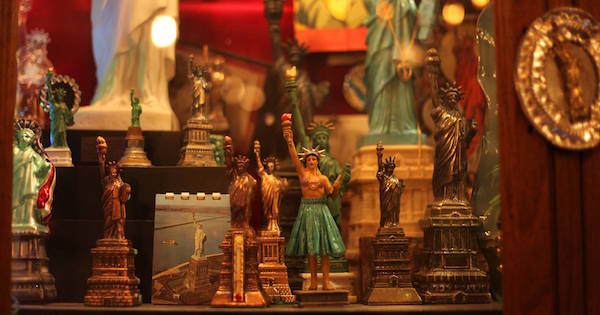
With a focus on New York City artifacts, the quirky City Reliquary aims to connect visitors to the city’s present—and past.
The museum started as a window display in the home of City Reliquary’s founder in 2002; it included Statue of Liberty figurines as well as a set of dentures found in Dead Horse Bay; viewers could listen to a recording that guided them through the display.
Four years later, the museum moved to a permanent home just a few blocks away, complete with a ribbon cutting by the Brooklyn Borough president.
Today, The City Reliquary offers both a permanent collection and rotating exhibits that showcase both city stories and community collections. The former includes fascinating bits of New York history, from fragments of landmark buildings to subway tokens and paint samples from the L train platform. The rotating exhibits have included one on the evolution of Wonder Woman in context with the women who both contributed to her evolution and were also instrumental in breaking down barriers for women in the city (Wonder Women: NYC’s Heroes of Heterodoxy).
The community collections give New York collectors a chance to showcase their holdings, whatever they may be. Displays have included everything (and we do mean everything) from objects that share a name with their collection (Glen Eden) to artifacts that represent daily life in the city.
The museum also offers a series of events that include “Bike Fetish Day” and “Collector’s Night,” as well as screenings, contests, and festivals.
Quirky, eccentric, and wide-ranging, the exhibits at the City Reliquary offer an up-close-and-personal look at the small details and carefully selected mementoes that reveal the people and passions that make up the city—one Statue of Liberty figurine at a time.
370 Metropolitan Ave., cityreliquary.org
City Island Nautical Museum
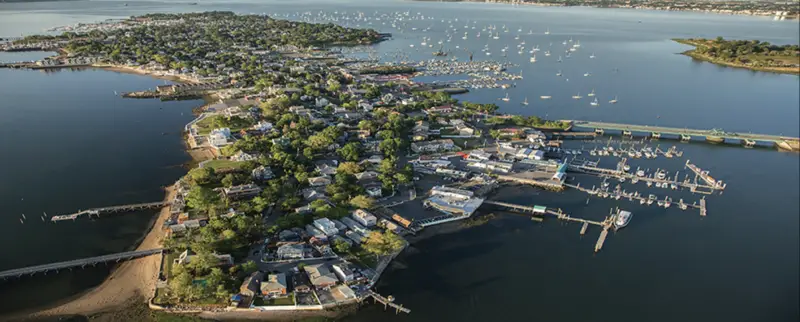
Image: City Island Nautical Museum.
When the weather warms up, thoughts turn to the outdoors, the water, the smell of the breeze over the ocean. A perfect time to visit the City Island Nautical Museum, which opens up again for the season each May. Accessible only by a small bridge leading into City Island, the whole area will make feel like you’ve left the city behind and somehow entered a small New England fishing village.
The museum itself focuses on City’s Island’s nautical past and its ties to the sea. Its boat-building history exhibit, for instance, explores the island’s heritage as a major center for wooden boatbuilding at the turn of the 20th century. Told through photographs, the exhibit shows the boatbuilding yards and the craftsmen, the intricate construction, and the boats that were built. Military vessels and the 12-meter sloops that defended the America’s Cup are also highlighted. (Fun Fact: all the winning boats until the 1980s were built on City Island.)
The Nautical Room showcases tools, boats, and parts of boats to further illuminate the heyday of boatbuilding and City Island’s role in it.
Other items on view include ship sails, model boats, America’s Cup memorabilia, and an archive of ocean-related books and periodicals. Visitors also learn some local history about topics as varied as residents who fought in WWII, maps of the island, and an FDNY display.
The museum is housed in a historical building that was the island’s elementary school in the late 1800s (the museum also has info on the school); and before that, was a site that once held a Revolutionary War graveyard. The building is on the National Register of Historic Places and is also a New York City landmark. It has the charming feel of a small-town museum, an integral part of the experience.
Tip: while you’re on City Island, spend some time just walking around enjoying the New England vibe, including the seafood restaurants overlooking the water and the small shops. There’s no better way to understand the history of a place than by exploring its past—and then living in its present.
190 Fordham St., Bronx, NY 10464, 718-885-0008, cityislandmuseum.org
National Lighthouse Museum
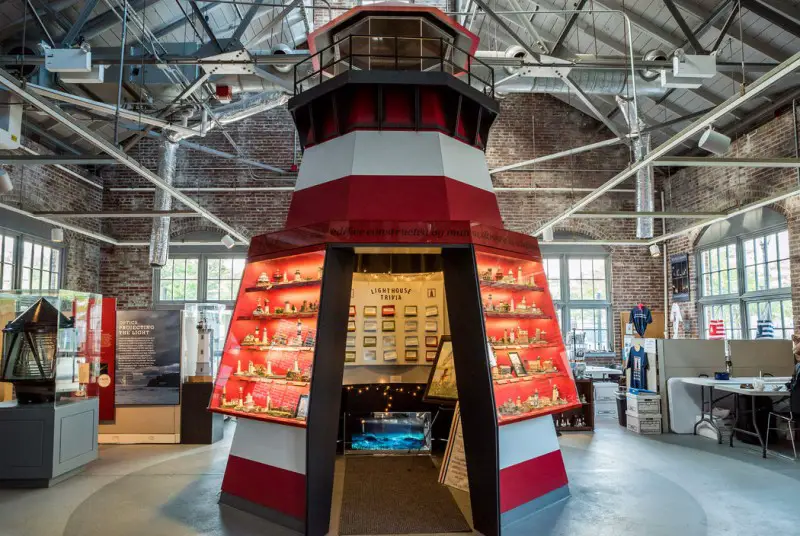
Image: National Lighthouse Museum.
Located on the grounds of the former U.S, Lighthouse Service Super Depot, the National Lighthouse Museum celebrates lighthouses and their history. It’s a boon for anyone who loves lighthouses (and who doesn’t love a lighthouse?) and a chance to understand the role they’ve played throughout history. The site was chosen for the establishment of the museum because of its historical significance as well as its role in one of the busiest harbors in the country. The site itself has a fascinating history—before the building of the processing center on Ellis Island for immigrants entering this country, the New York Marine Hospital served as a place where people could be quarantined to prevent the spread of infectious diseases. Later, the site became the Staten Island Lighthouse Depot, a major storage, maintenance, supply, and manufacturing center.
Visitors can wander through the museum on their own; permanent exhibits include Wall of Lights, which consists of more than 180 lighthouse models from 29 states; it’s the first thing visitors see as they enter the building.
The Lighthouse Timeline traces the world history of lighthouses, from the Pharos Light in Alexandria, Egypt (280 BCE) to the founding of the National Lighthouse Museum in 2015.
Other permanent exhibits include US Lighthouse Service Depot History, an interpretation of the site on which the museum stands; and Illuminants and Optics, focusing on the different light sources used in light houses, from candles to the Fresnel lens, which concentrates light into a narrow beam.
Exhibition panels rotate information on lighthouse-related topics, including lighthouse architecture and lighthouses in popular culture.
But you’re not limited to only exploring the interior. The museum, which is open seasonally, runs boat tours with the museum’s historian, as well as an annual lighthouse weekend in August, a festival in September, and group tours by appointment.
Seeing lighthouses just feels like a vacation; with warmer weather afoot, there’s no better time to indulge in a mini one.
200 The Promenade at Lighthouse Point, Staten Island, NY , 718-390-0040, lighthousemuseum.org
Museum of Reclaimed Urban Space
Started as a living history of urban activism, the Museum of Reclaimed Urban Space showcases the role that grassroots action has played in the East Village. The museum, which opened in 2012, places a particular emphasis on the transformation of abandoned spaces into community gardens and spaces. It was founded on the idea that the East Village, like so many other urban neighborhoods, was transforming so rapidly that it was losing its own history, and has since become the model for other organizations.
The exhibit Squats, for instance, looks at the 1970s housing crisis, and how empty buildings were claimed as housing. At one point, over 30 “squats” were in use on the Lower East Side, providing housing for almost 1,000 people. Many of these buildings have now been transformed into livable spaces. Squats documents the role of artists and activists in this process, as evinced by videos available in the exhibit.
The museum also offers guided tours of the neighborhood, including sites where community members and corporate power faced off, as well as community gardens, Tompkins Square Park, and the first community-based recycling center.
The museum itself plays an interesting series of roles, as both chronicler and motivator, witness, and participant. It offers a way to both preserve the past and spur participation in the future.
Inspired by their mission? The museum not only illuminates past endeavors, it encourages future ones: community activism and sustainable development. And the museum itself is fueled by volunteers who both renovated the building—and run the museum.
155 Ave. C, 973-818-8495, morusnyc.org
Bartow-Pell Mansion Museum
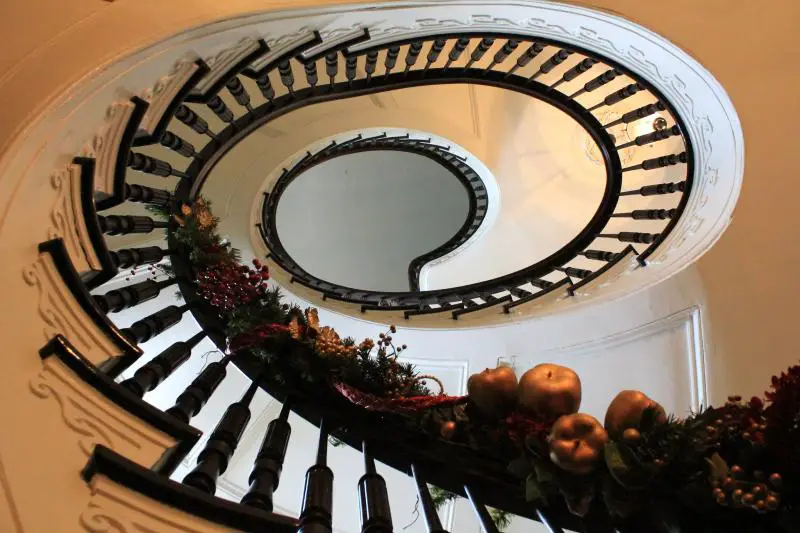
Francisco Daum/Flickr
One of New York’s great joys is discovering the small, the hidden, the path less trodden. Add to that list the Bartow-Pell Mansion Museum, a historic house museum in the Bronx.
Formerly a mansion owned by Robert Bartow—a descendant of Thomas Pell, who originally purchased the land on which the mansion stands—the building became a museum in 1946. It now includes the house and grounds, encompassing a formal terrace; herb and perennial gardens; a fountain; a Children’s Organic Garden; a family memorial plot; and an 1840s stone carriage house. All are owned by the City of New York, and the mansion is a national and New York City landmark. It’s also the last mid-19th century country-estate home in the Pelham Bay area.
Located in Pelham Bay Park (which is more than three times the size of Central Park), the elegant house boasts a late Federal-style facade and Greek Revival period rooms. You can explore the exquisitely furnished interiors and stroll the gardens; you’ll feel like you’ve time travelled, or perhaps stepped into the pages of a particularly vivid 19th century novel. Fun fact: Mayor Fiorella LaGuardia used the mansion as a summer office in the 1930s.
Be sure to look at the details: the game table, the pocket doors, and the desk of Aaron Burr, who married Theodosia, a distant Bartow relative.
Our favorite: the Orangerie—the sun-filled room with huge windows, an unusual feature in an American home.
Ongoing events make the experience here even more memorable, from seasonal Candlelight Tree Tours in the evenings during the holiday season, to concerts, tea parties, arts and crafts, lectures, and more.
No need to time travel or even actually travel—you can be the inhabitant of a 19th century mansion only a subway ride away—if only for an afternoon.
895 Shore Rd., The Bronx, bartowpellmansionmuseum.org
Nicholas Roerich Museum
Russian-born artist Nicholas Roerich (1874-1947) explored the subjects of myth, nature, and the spiritual strivings of humanity around the world. While his name may not be familiar to many people, he was a prolific painter whose works now hang in collections around the globe. Out of his literally thousands of paintings, 200 are on permanent display in the Nicholas Roerich Museum in New York City, along with many archival materials. His works can also be found in other museums around the world, including several that also bear his name.
Roerich’s work, which has an almost folkloric quality, takes its inspiration from sources as varied as the Bible and mythology from around the world, as well as history and literature. Many of his works focus on Russia—he was especially interested in Russia’s long-ago past—and central Asia, and span almost 30 years, from 1900-1928. His works on nature focus largely on the Himalayas.
The museum also holds a large collection of the artist’s pencil drawings, ranging from images for stage productions (he was a designer for Diaghilev’s famed Ballet Russes) to site-specific drawings, from Arizona to the Himalayas. He was heavily influenced by Russian symbolism, which was spiritual in nature; his work incorporates dreamlike imagery and an often-hypnotic feel.
Roerich was nominated several times for the Nobel Peace Prize, for his emphasis on preserving art and architecture during war; he was also well-known for his architectural studies.
The artist and family settled in New York City in the late 1920s; the museum is in a brownstone on Manhattan’s Upper West Side. (It was previously located in his former home a few blocks down.) Like so much else in New York, part of the enjoyment of visiting the museum is not just the art, but finding it tucked away in its out-of-the way locale.
319 W. 107th St., 212-864-7752, roerich.org
Poe Cottage: Edgar & Virginia Poe Death Exhibit
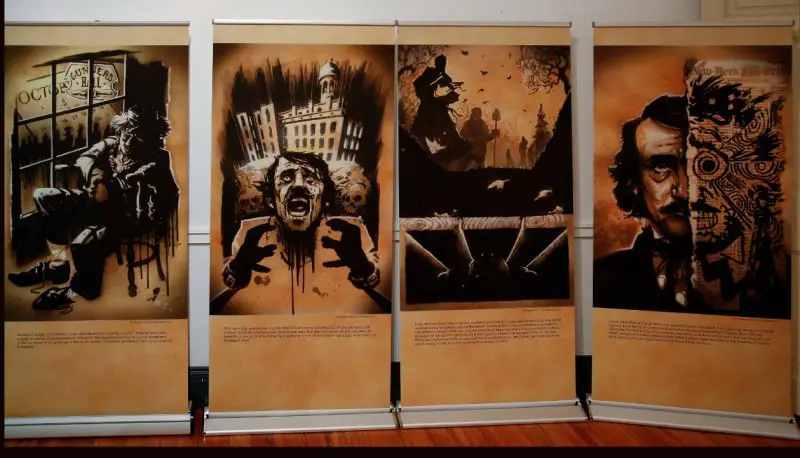
Built in 1812, the Poe Cottage in the Bronx is the final home of the famed writer Edgar Allan Poe. Poe rented the cottage for $100 a year starting in 1846; it’s now listed on the National Register of Historic Places,
Poe moved there with his wife Virginia to help curb her tuberculosis. (Sadly, she died about a year after they moved into the cottage.) While living there, Poe wrote The Cask of Amontillado, Annabel Lee, and other short stories and poems.
The last remaining structure from the 19th century village of Fordham, the house was restored with furnishings appropriate to the 1840s, including a desk, rope bed, and wicker rocking chair that may have belonged to the family, displayed in rooms including a parlor, bedchamber, and kitchen. The cottage was moved to its current location across the street in Poe Park in 1913.
In keeping with Poe’s gothic and often morbid aesthetic, visitors can also gaze at mourning jewelry and art made from human hair. A mobile app and a guide are included to answer your (probably many) questions.
640 Grand Concourse, the Bronx, bronxhistoricalcottage.org
Mmuseumm
New York has a museum for every day of the month, or many months, really. Depending on your mood (“Feels like a MoMA sort of day”); schedule (”I have an hour; perfect for the Rubin”) or even location (“The Queens Museum is right nearby”) you can pick whatever works for you at a given moment in time.
If tiny (it’s most likely the smallest museum in New York), quirky, and unlike-anything-else is what you’re after, look no farther than Mmuseumm (it’s still pronounced “museum,” by the way). What is it, exactly? Well. It’s kind of like a giant cabinet of curiosities, collections of objects generally organized by category, and often unusual or offbeat in some way.
It was founded by Alex Kalman and the Safdie Brothers (filmmakers known for such movies as Uncut Gems) in 2012 in a former elevator shaft—yes, you read that correctly. Kalman (also a filmmaker) and the Safdies learned that their landlord was turning the building’s elevator shafts into art studios, and rented the ground floor space, opening right onto the street. The goal? To curate and exhibit contemporary artifacts that illustrate the modern world. (The second “wing," Mmuseumm 2, opened in 2015, just three doors down. It totals 36 square feet and can be viewed 24 hours a day through peepholes in its door.)
Past exhibits have had titles such as “Paper Works Found in Copying Machines,” and “Personal Possessions Found in the Pacific,” all in pursuit of the goal to highlight the “overlooked, dismissed, or ignored.” Objects on display have included a shoe thrown at George W. Bush, fake vomit, Disney-themed bulletproof backpacks, and a hot water coil heater from Kaunas, Lithuania. The display is updated every year.
You can partake of the audio guide, but you might also prefer just simply standing and gazing at everything and imparting your own sensibility onto what you see--and letting it do the same to you.
(Note that the Mmuseumm is closed for winter, reopening in the spring.)
4 Cortlandt Alley, 888-763-8839, mmuseumm.com
Snug Harbor Cultural Center and Botanic Garden
A hop, skip, and a jump—or, more likely, a ferry or car ride—away from Manhattan, you can find yourself at the Snug Harbor Cultural Center and Botanic Garden in Staten Island, a year-round oasis.
The Cultural Center is comprised of many different areas, but for summer visits, we’d be remiss not to recommend visiting the gardens.
First off, the New York Chinese Scholars Garden is one of only two authentic outdoor Chinese gardens in the United States. Based on Ming Dynasty gardens, all the components (roof and floor tiles, bridges, doors, and windows) were fabricated in Suzhou, China. With eight pavilions, a pond filled with koi, waterfalls, and a bamboo forest path, all created by a team of 40 Chinese artists and craftspeople, you may just want to spend your entire visit there.
If you do, though, you’d miss The Rose Garden, with over 100 varieties of roses, perfuming the air with an intoxicating, heady scent; the White Garden, inspired by Sissinghurst, the famous English garden owned by Vita Sackville-West (it includes a castle, a maze, and a secret walled garden!), and the Healing Garden, a tribute to the more than 250 Staten Island residents who perished in the terrorist attacks of September 11, 2001.
The complex also consists of a variety of architecturally significant buildings: it was originally founded as Sailors’ Snug Harbor, a sailors’ retirement home that opened in 1833. When it moved away in 1976, the buildings became a cultural center. Twenty-six Greek revival, Beaux Arts, Italianate, and Victorian style buildings can be found here—an extraordinary collection to be clustered in one place. The buildings now include the Staten Island Children’s Museum and the Staten Island Museum.
For the latter, the current exhibition is Taking Care: The Black Angels of Sea View Hospital. The show highlights the groundbreaking work, lives, and legacy of the “Black Angels,” the Black nursing staff at Sea View Hospital in Staten Island who risked their lives to break racial barriers and care for tuberculosis patients. statenislandmuseum.org
1000 Richmond Terr., Staten Island, 718-425-3504, snug-harbor.org
New Museum (Closed Until Early 2024 Due to Expansion)
The only museum in the city dedicated to contemporary art, the New Museum was founded in 1977 to showcase the work of underrepresented artists. It’s also the home of such initiatives as NEW Inc., an incubator for developing ideas at the intersection of art, technology, and design.
Rather than having a permanent collection, the museum exhibits art from galleries, museums, and collectors around the world. Exhibitions cover everything from large-scale paintings to videos to installations examining the phenomenon of vibration and how different rhythms and frequencies affect group dynamics. A robust program of screenings, artists in conversation, book launches, and more round out the experience. The New Museum also offers a strong selection of programs for younger audiences, including an after-school program focusing on workshops, art making, and discussion.
The New Museum will be closed for the rest of 2024 as it is expanding its space.
235 Bowery, newmuseum.org
Here are our picks for interactive museums in New York, including pop ups.
You can find more things to do in NYC here.


.jpg)

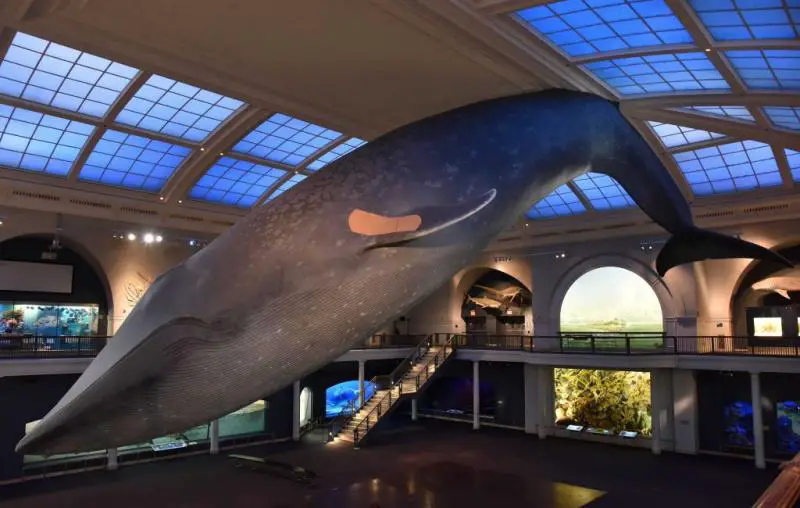
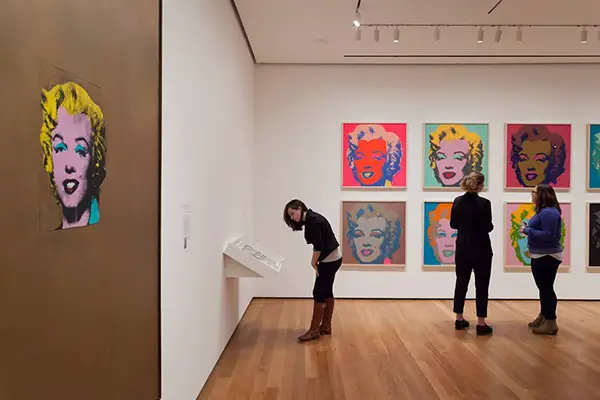
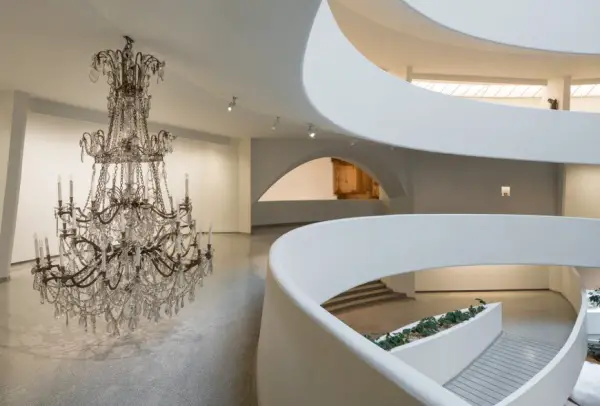
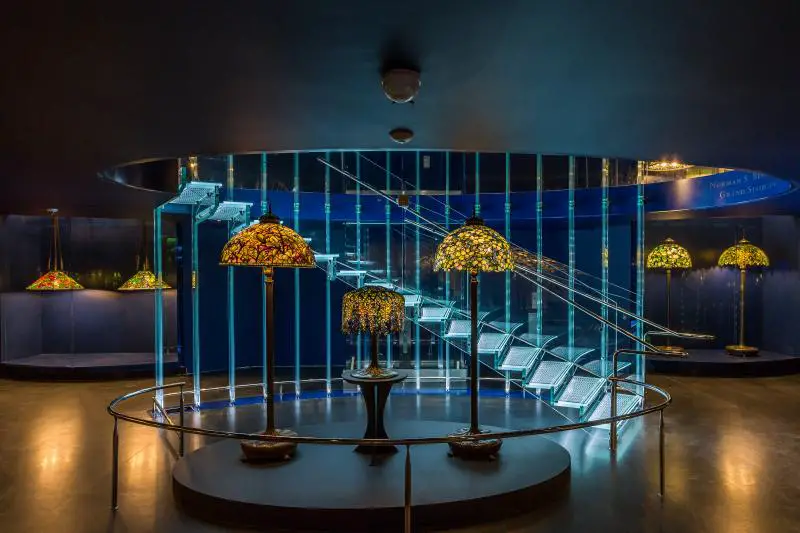
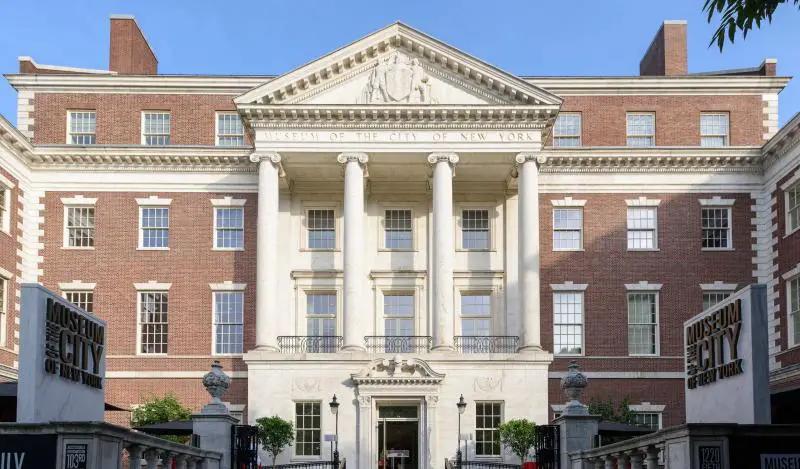
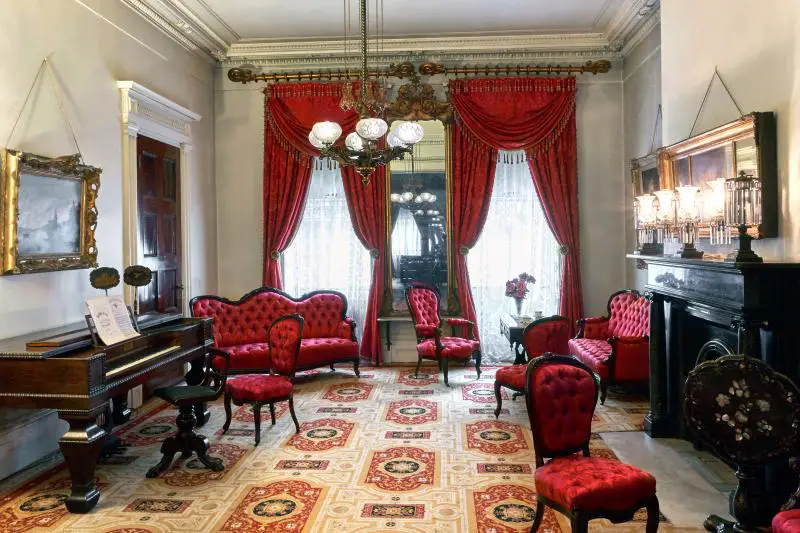
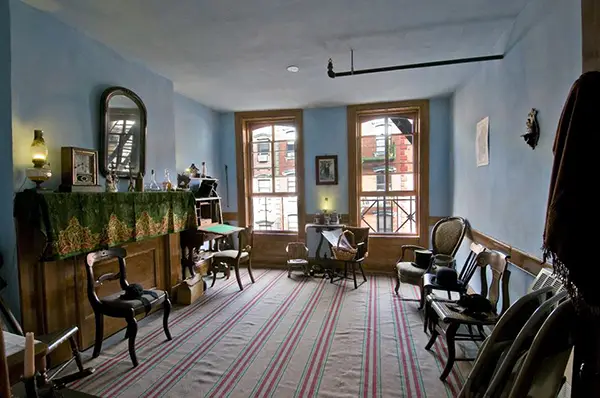
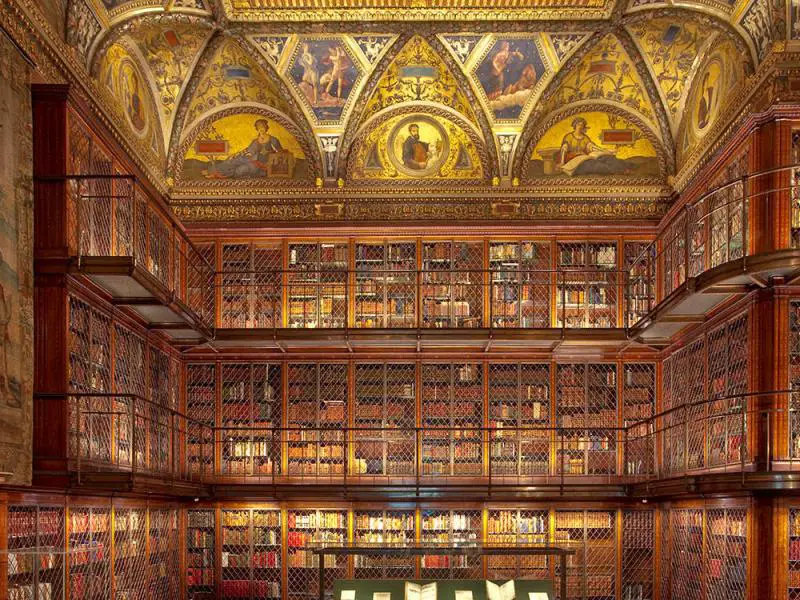
.jpg)
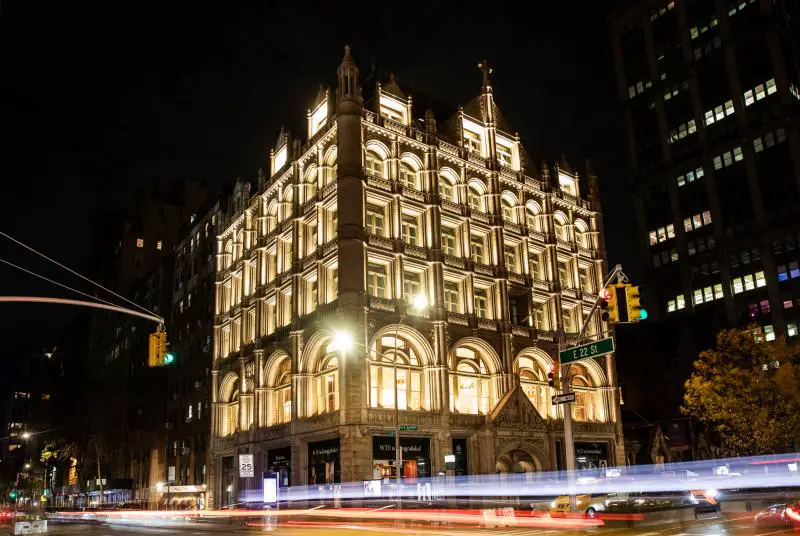
.jpg)
.jpg)
